|
Marmon-Herrington Company in World War Two
Indianapolis, IN -
1931-1963
Louisville, KY - 1963 to present
This page updated 11-28-2024.
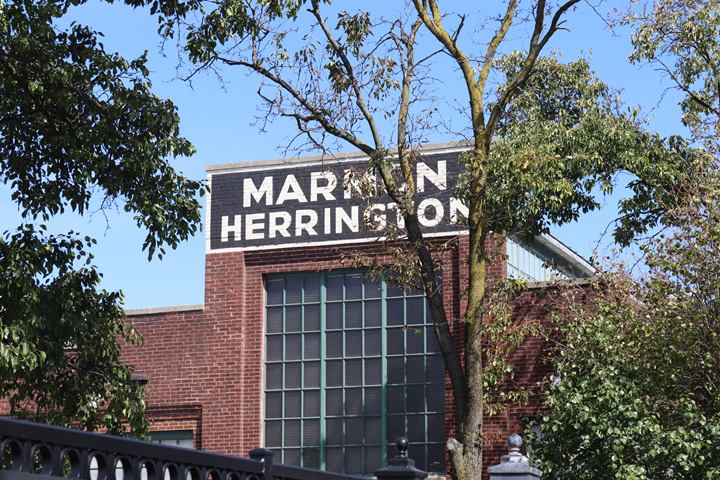
Fifty-five years after
Marmon-Herrington closed its plant in Indianapolis, one of the two
remaining factory buildings still has Marmon-Herrington
painted on it. The rest of the plant has been torn down
and repurposed as the headquarters for the IndyGo municipal bus
service. The name Marmon-Herrington on the side of the building
shows no weathering. It looks so good that it would appear IndyGo
has repainted the name and maintained it. Either that, or the painting has been
done by an Indianapolis industrial historian. Author's photo added 9-29-2019.
From 1902 to 1933, the Marmon Motor Car Company built automobiles.
Marmon-Herrington was formed in 1931 by Walter Marmon and Walter
Herrington, focused on building all-wheel drive trucks. Marmon-Herrington was especially successful in
converting Ford trucks into all-wheel drive. Today, the company
continues to provide all-wheel drive components to the heavy-duty
trucking industry.
Indianapolis historians have overlooked
Marmon-Herrington's contribution to the winning of World War Two.
At the main military museum in downtown Indianapolis, there is no
mention of the company among other noted local firms. And yet,
Marmon-Herrington was one of a select group of 17 American companies that
built tanks during World War Two. The tanks were built on the west side
of Indianapolis at West Washington Street and Harding Avenue, just 2.6
miles away from the downtown military museum.
Towards the bottom of this page is a 1944
Marmon-Herrington publication entitled "Ten Years Before Pearl Harbor."
It covers the time period from the company's birth in 1931 to 1944.
This publication has photos of all of the products it built for military
applications during that time period. It shows an aggressive
company that produced a prolific number of different products for an
international customer base.
This website shows Marmon-Herrington's
contribution to the winning of World War Two which has been overlooked
until this time.
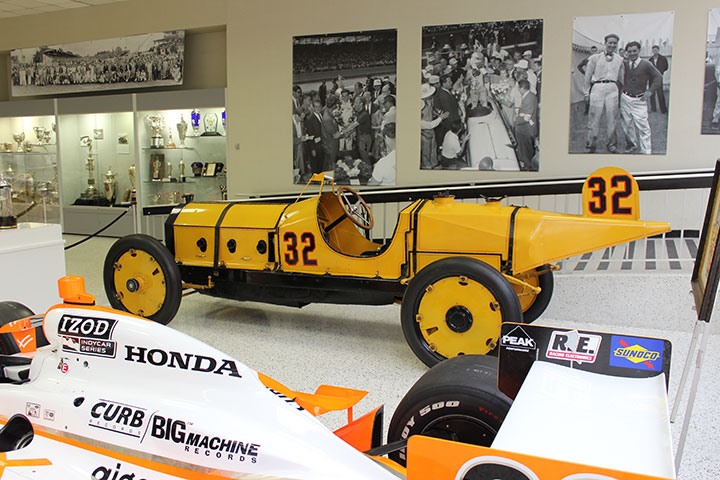
The Marmon "Wasp" that won the very first
Indy 500 in 1911 is on display at the Indianapolis 500 Hall of Fame
Museum in Speedway, IN. The author viewed the vehicle at a
local big box electronics retailer in Fishers, IN in March 2017.
The museum loans out the "Wasp" on a regular basis.
Author's photo.
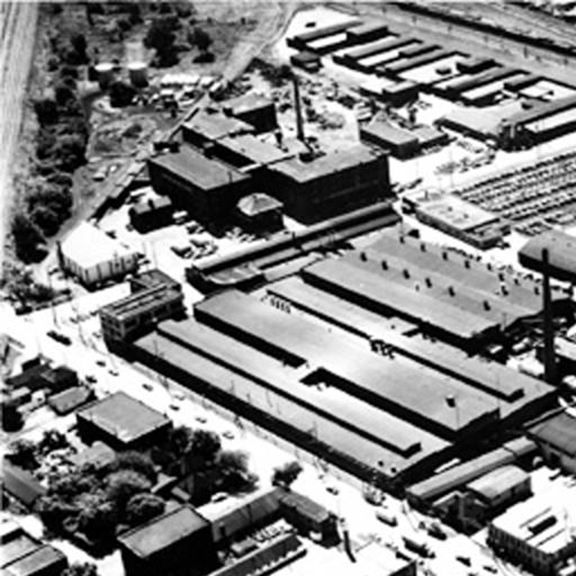
This photo was taken in 1964 about the time
the plant closed. The view is to the south-east with West
Washington Street (US-40) along the bottom of the photo. Harding
Street runs north and south in the middle of the complex.
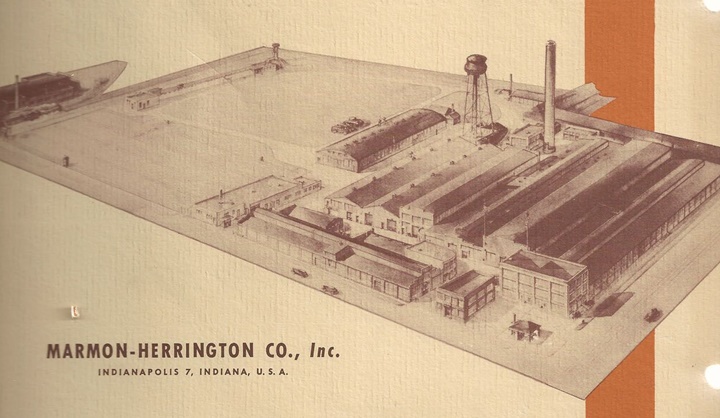
This artist's rendition of the
Marmon-Herrington plant, 1511 West Washington Ave. in Indianapolis, is from the
company's 1944 publication "10 Years Before Pearl Harbor." The
drawing is looking southwest with Washington Ave. along the right and
Harding Street along the front. The long building facing Harding
Street has had a section removed and is now two buildings, as shown
below in my contemporary photos.
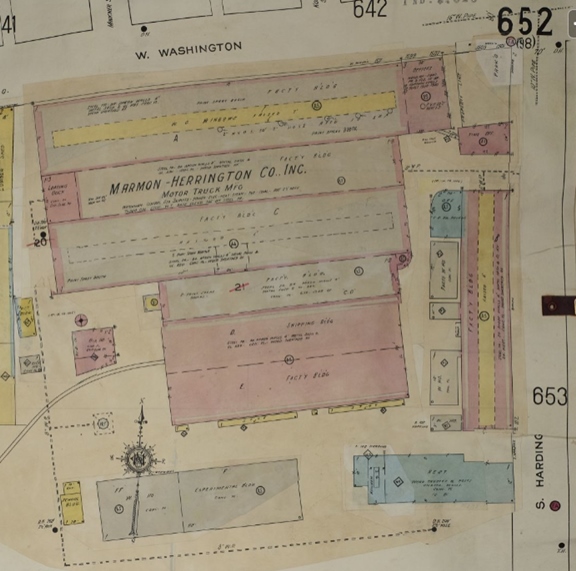
This Sanford map shows the Marmon-Herrington
factory in 1950. Imaged added 5-11-2022.
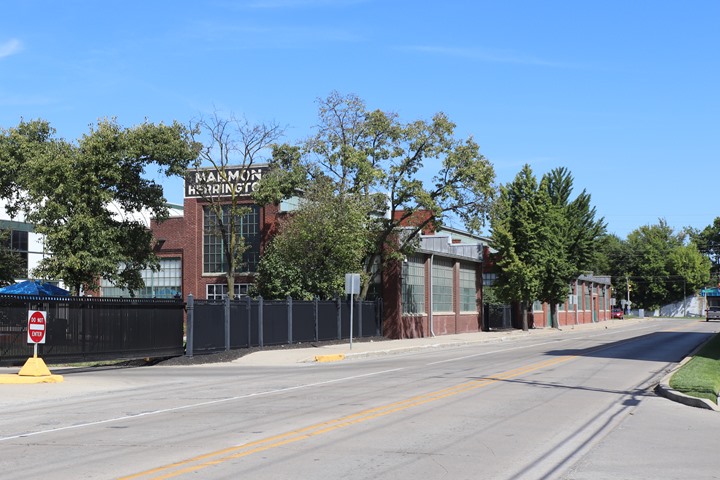
The orientation of this photo is looking
north along Harding Street towards West Washington Street. Along
Harding Street is an original factory building, which has had a section
removed as noted above. Author's photo added 9-29-2019.
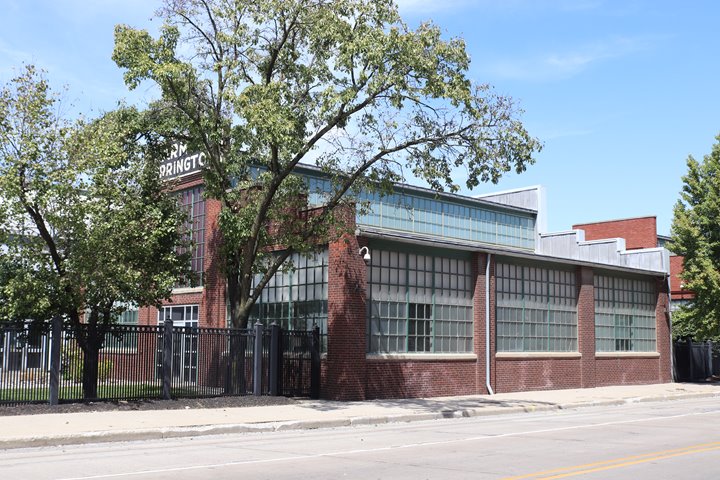
This is the smaller section of the original
factory building. Author's photo added 9-29-2019.
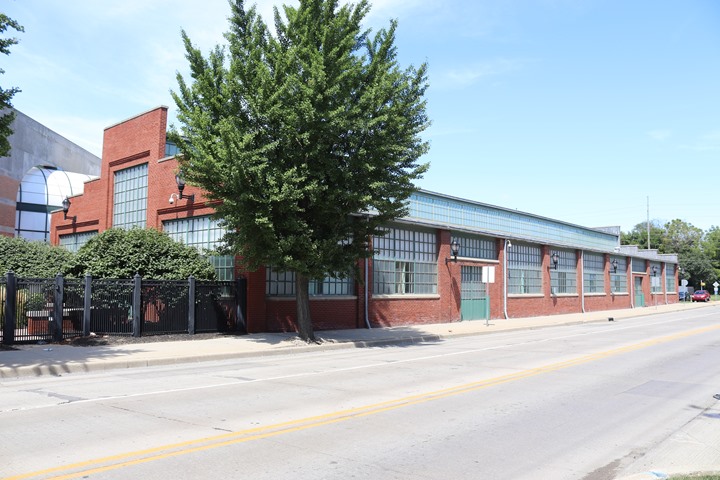
This is the second portion of the original
building. There is a courtyard where a section of the original
building has been removed. Work is being done on the interior of this building to
repurpose it for IndyGo offices. Author's photo added
9-29-2019.
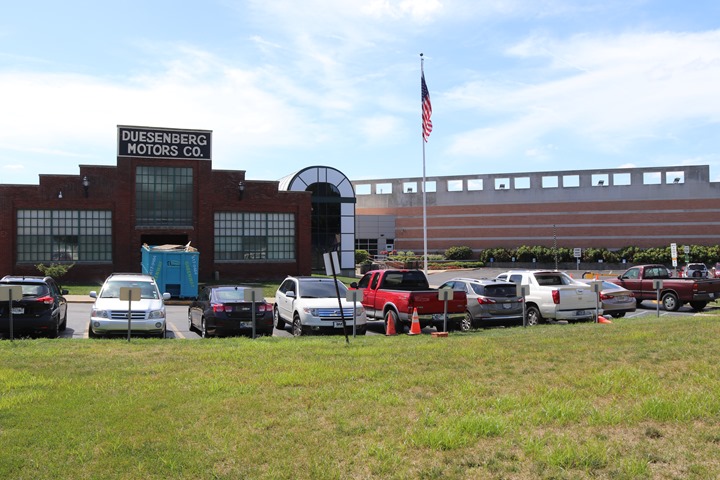
This is the north face of the north building. Duesenberg
Motors was the previous occupant of the factory at this
location. When it went out of business, Marmon-Herrington moved
in. Again, it appears someone has painted the name on the
building. It is doubtful Marmon-Herrington would have left the
name Duesenberg on the building, so this has most likely been painted by
an Indianapolis industrial historian or IndyGo. Also, this was not the
building nearest Washington Ave. The office building was in the grassy area,
which most likely would have had the company name on it.
The new brick building in the right-hand side of the photo is the IndyGo
bus terminal and maintenance building. This is where most of the
factory was. Author's photo added 9-29-2019.
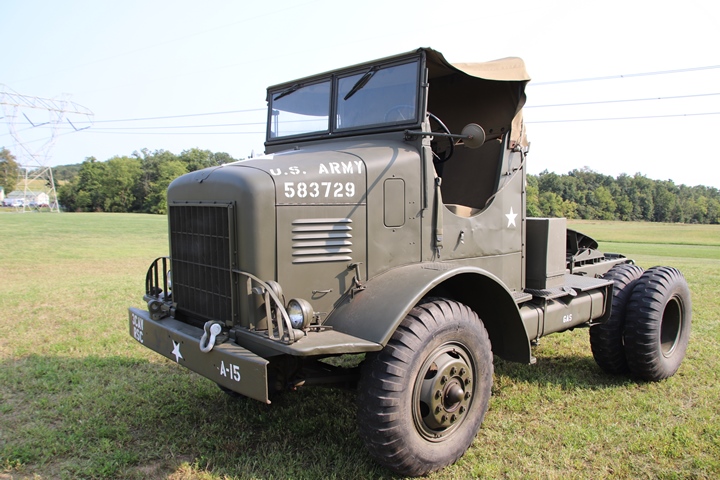
This 1945 Marmon-Herrington-converted
H-542-H11C was seen at the World War II American Experience Museum in
Gettysburg, PA. It was on outside display for an open house at
this excellent museum. This vehicle was originally built as an
H-542-H1C 5-ton 4x2 light duty tractor. This is one of 1,200
H-542-H1C light duty tractors Marmon-Herington converted into the
H-542-H11C heavy duty configuration. Author's photo added
9-27-2022.
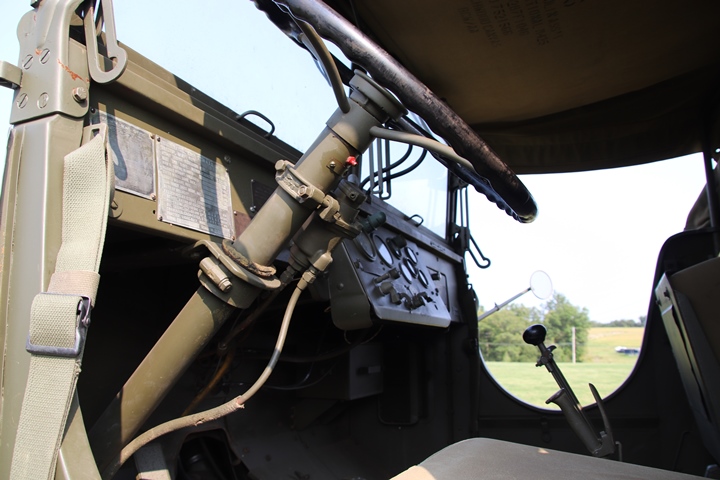
Author's photo added 9-27-2022.
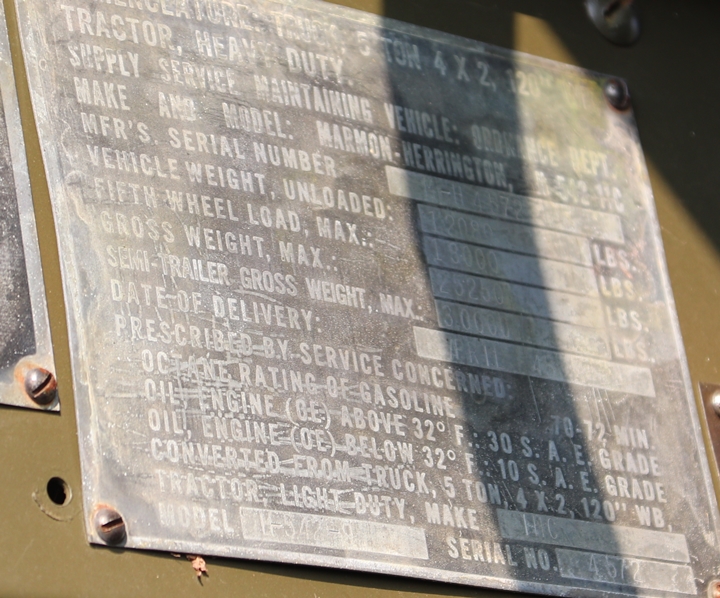
The data plate indicates that this is a 5-ton
4x2 heavy duty tractor Model Marmon-Herrington H542-IIC. At the
bottom of the data plate, it shows that it was converted from a light duty
HIC. The vehicle is serial number 4672. Author's photo added
9-27-2022.
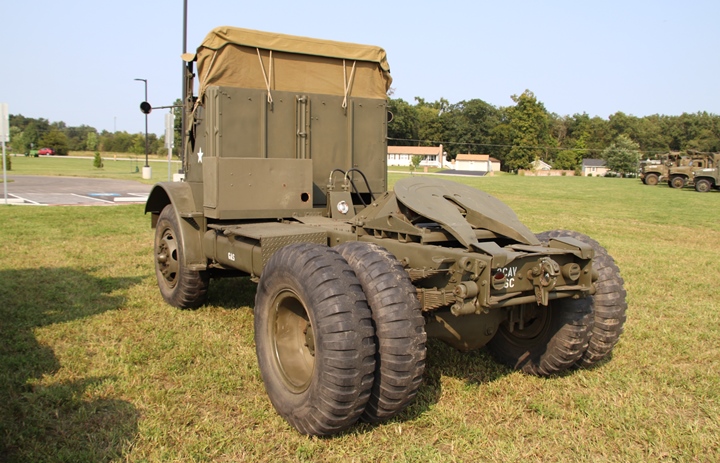
The photos were taken on a sunny September
afternoon. Author's photo added 9-27-2022.
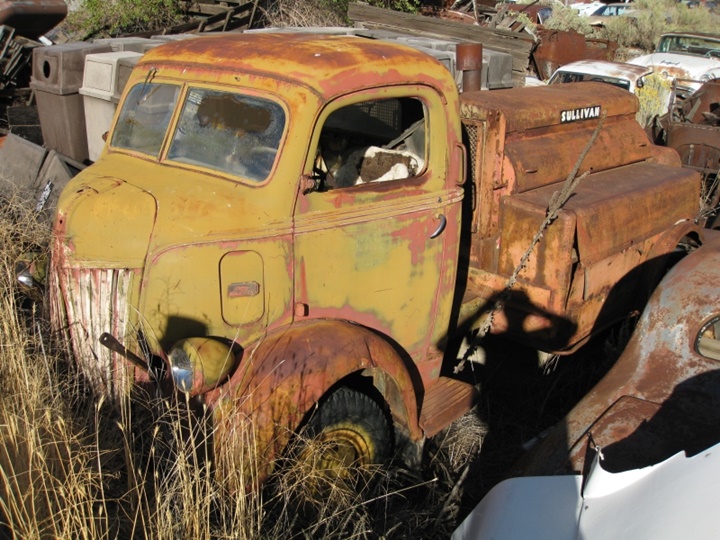
This forlorn looking Ford/Marmon-Herrington
four-wheel drive truck sitting among the weeds and derelict cars in a
junk yard is one of only 79 built by the company. Once the
Marmon-Herrington added the four-wheel drive to the vehicle, it was
shipped to Michigan City, IN where the Sullivan Machinery Company
installed the air compressor unit. Image courtesy of Jeff Lakaszcyck
added 11-28-2024.
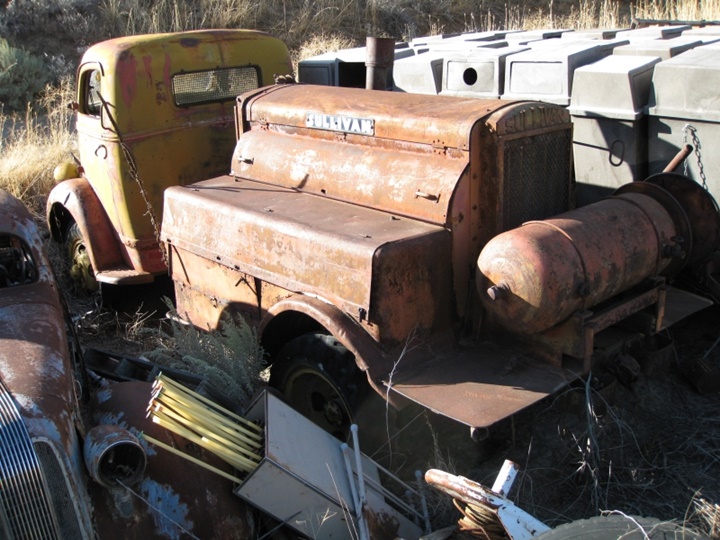
Image courtesy of Jeff Lakaszcyck added
11-28-2024.
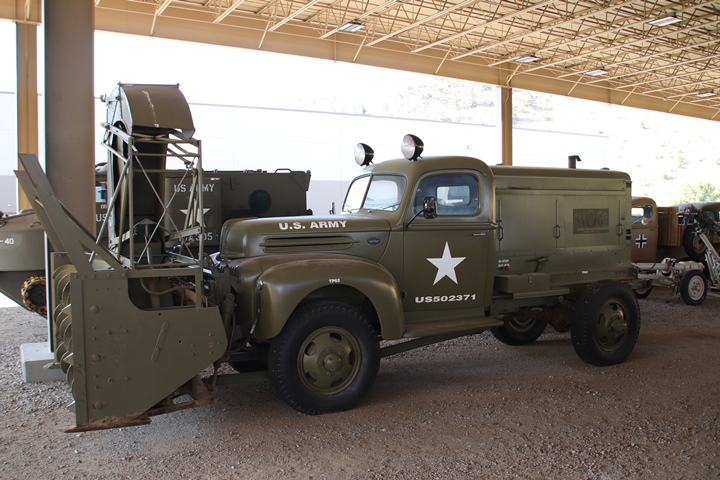
This Ford/Marmon-Herrington truck is on
display at the National Museum of Military Vehicles in Dubois, WY.
Mounted on the truck is a Klauer Manufacturing Company "Snogo" snow
blower. Author's photo added 11-28-2024.
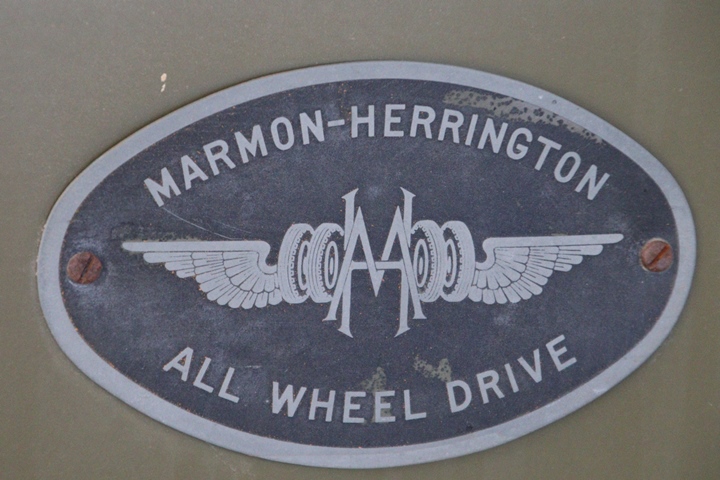
The truck is identified as being a
Marmon-Herrington All Wheel Drive truck. Author's photo added
11-28-2024.
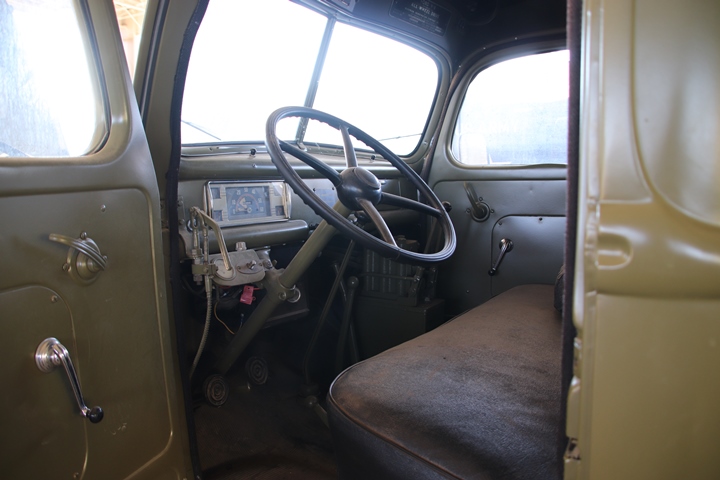
Author's photo added 11-28-2024.
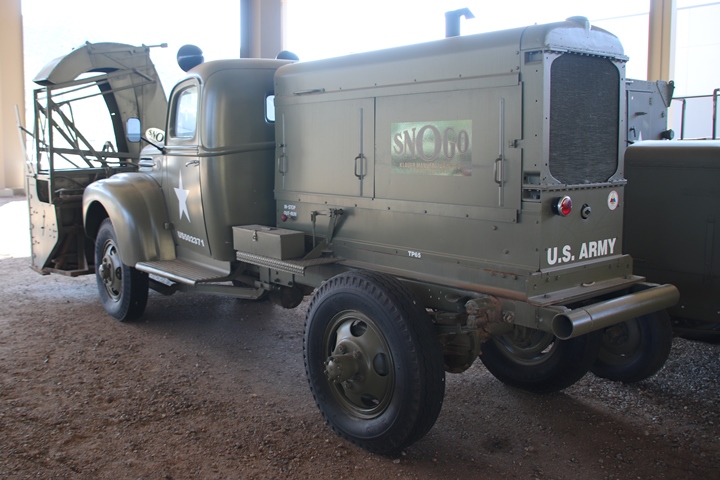
The gasoline engine mounted on the rear of
the truck provides the power to the snow blower unit. Author's
photo added 11-28-2024.
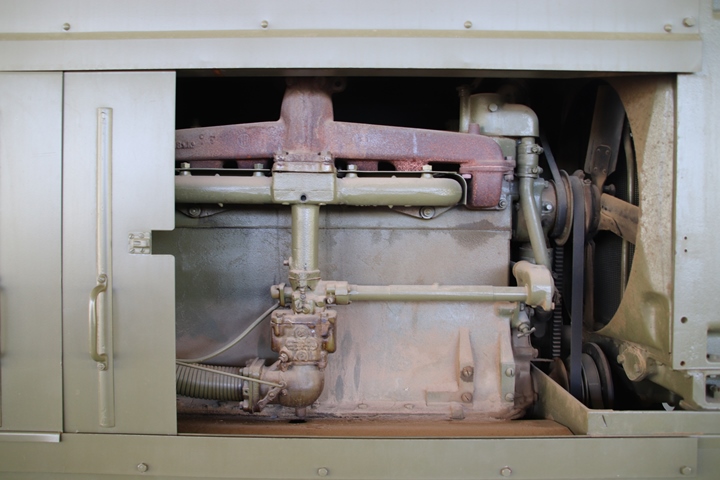
Author's photo added 11-28-2024.
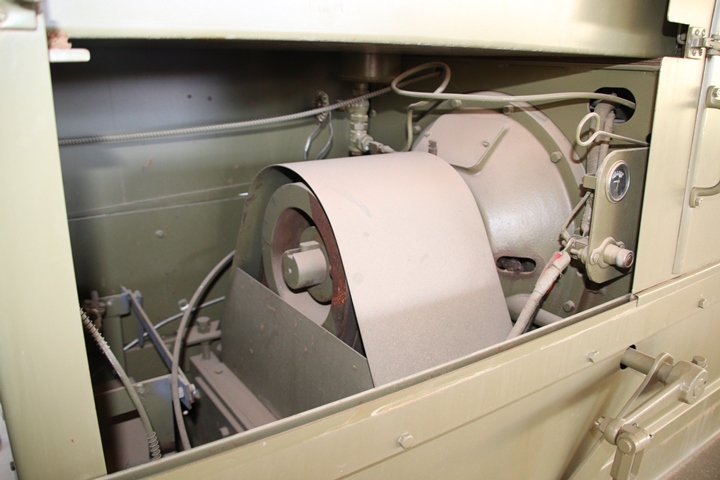
The power from the engine is input into this
power takeoff which transfers the power to the transfer case below the
truck. Author's photo added 11-28-2024.
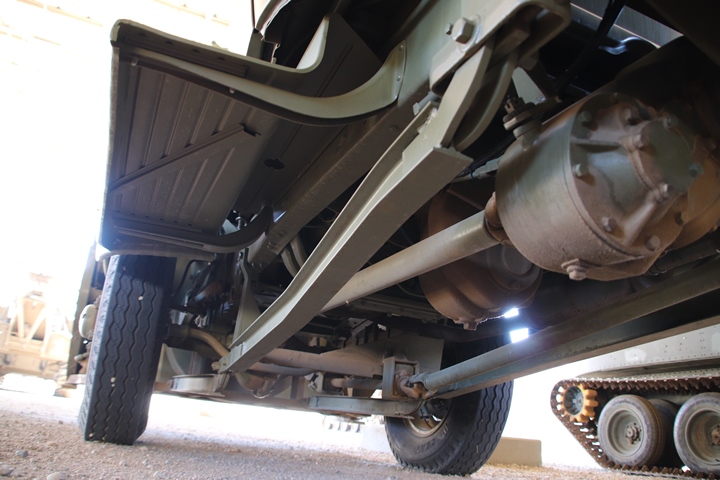
A look underneath the vehicle shows the
transfer case in the foreground and two propeller shafts running to the
front of the vehicle. The propeller shaft on the driver's side runs to the
snow blower and the other one on the passenger side runs to the front axle.
Author's photo added 11-28-2024.
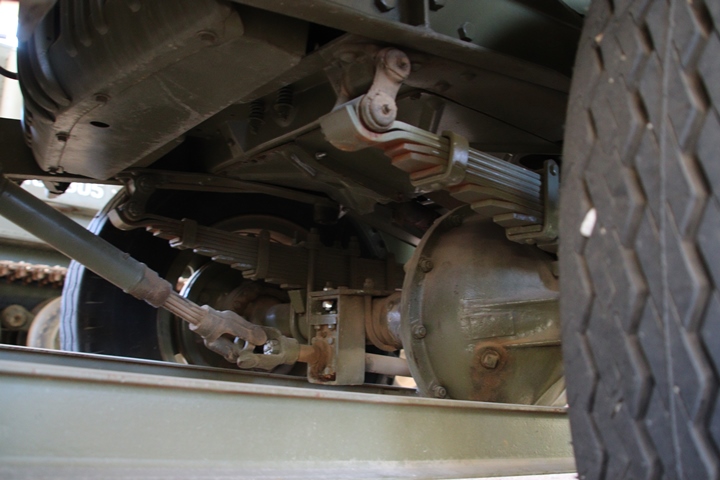
This image taken from the passenger side of
the vehicle shows the propeller shaft running underneath the front axle
and out to the snow blower. Author's photo added 11-28-2024.
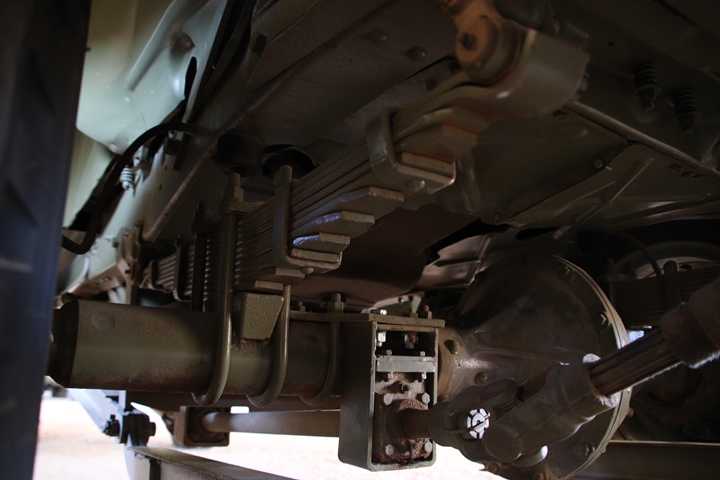
This photo taken from the driver's side of the vehicle also shows the
power from the engine mounted on the back of the truck running
underneath the front axle. Author's photo added 11-28-2024.
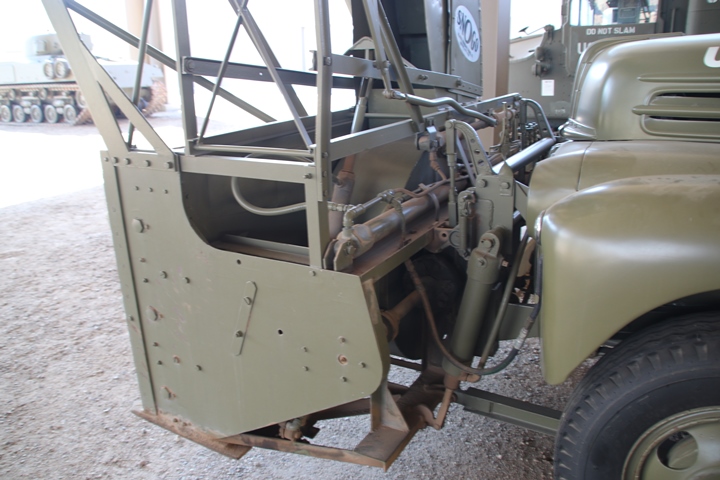
This photo shows the propeller shaft
continuing out to the snow blower unit. Author's photo added
11-28-2024.
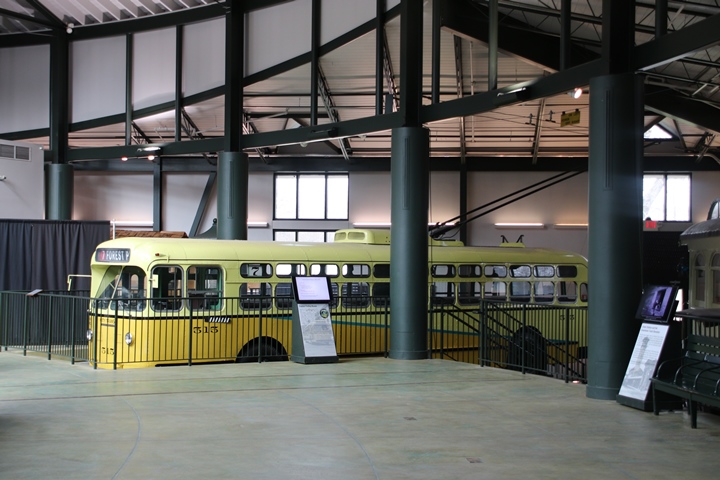
How cool is this? When I did the
original research on Marmon-Herrington, I discovered that the
company built trolley buses after World War Two. However, I
did not have any photos to publish of a Marmon-Herrington-built trolley.
This was in April 2017. Then five years later, in March 2022, I was
at Dayton History in Carillon Park, Dayton, OH researching another company where
I found this 1949 Marmon-Herrington electric trolley. Author's
photo added 5-11-2022.
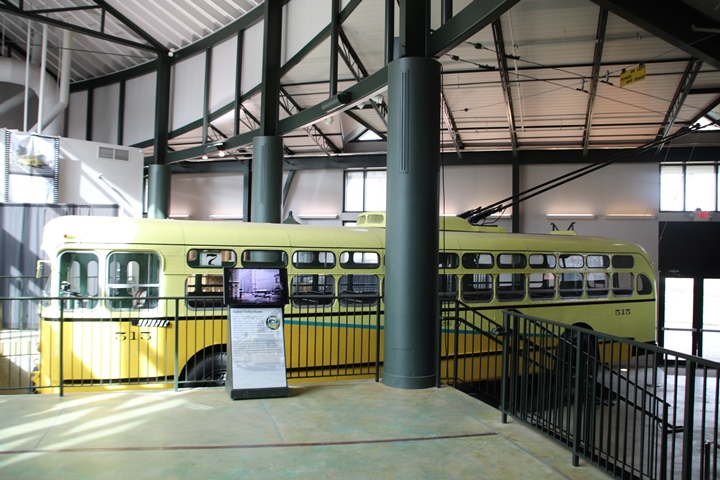
This is a Model TC-48, purchased by
the City Railway Company of Dayton, OH in May 1949. Between 1949
and 1988, when it was retired, it traveled a million miles over the
streets of Dayton powered by electrical power supplied by overhead
cables. The electrical trolleys in Dayton were ahead of their
time. Currently, municipalities are returning to electric powered
buses to reduce greenhouse gases and for quieter operation on city
streets. Author's photo added 5-11-2022.
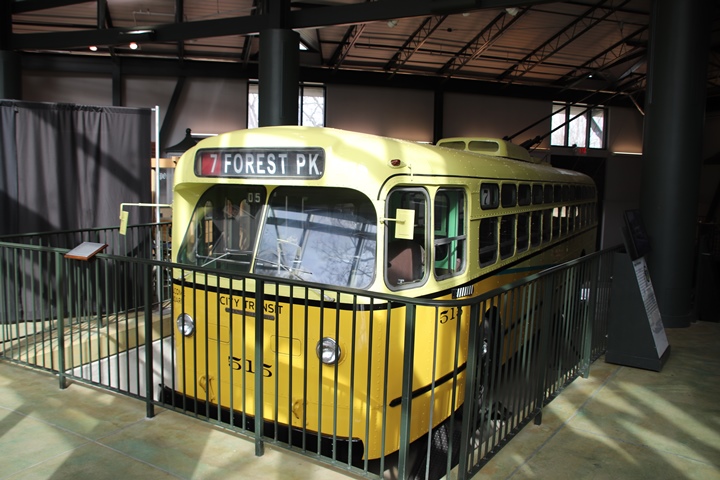
Author's photo added 5-11-2022.
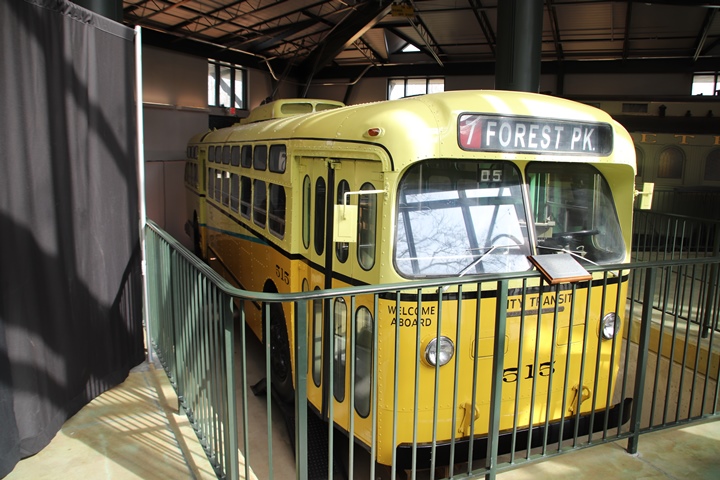
Trolley Number 515 was known as the "Queen
of the Fleet." She was one of twenty trolleys Marmon-Herrington
produced for the City Railway Company of Dayton, OH.
Author's photo added 5-11-2022.
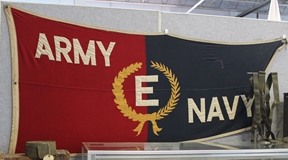
Marmon-Herrington won the Army-Navy "E"
award once during World War Two.
Marmon-Herrington
Company World War Two Production: The company produced
$89,951,000 of military products during the war.
Table 1 -
Marmon-Herrington Military
Vehicles
Accepted by Detroit Ordnance, US Army
The information below comes from "Summary Report of
Acceptances, Tank-Automotive Material, 1940-1945"
Published by Army Services Forces, Office, Chief of
Ordnance-Detroit, Production Division, Requirements and
Progress Branch
January 21, 1946 (Date on document is 1945. However,
this appears to be an error as the summary has 1945
acceptances.) |
|
Type |
1940 |
1941 |
1942 |
1943 |
1944 |
1945 |
Total |
|
Light tank, 7-ton (most likely CTLS) |
|
|
240 |
|
|
|
240 |
|
M22 (9TE1) |
|
|
|
680 |
150 |
|
830 |
|
5-ton 4x2 tractor heavy duty SWB (120 inch WB) (Same as
International Harvester H542-9. M425 in Army
Nomenclature) |
|
|
|
|
2,000 |
1,200 |
3,200 |
|
Total |
|
|
240 |
680 |
2,150 |
1,200 |
4,270 |
Author's Note and Disclaimer:
The Detroit Office of Ordnance of the U.S. Army was the primary
purchasing entity for vehicles for the U.S. Army during World War Two.
It also purchased vehicles for the USMC, US Navy, and Lend-Lease.
However, there were other organizations that also purchased vehicles
including the Army Corps of Engineers, Navy Bureau of Ordnance, Navy
Bureau of Aeronautics, and foreign countries making direct purchases.
The above information only reflects what
Army Ordnance purchased. In the case of Marmon-Herrington, it had
many contracts from foreign companies leading up to World War Two.
Historical information indicates the U.S. Army purchased 240 CTLS tanks
for use in Alaska. This matches with the 240 7-ton light tanks
accepted by Army Ordnance in 1942. As shown below in Table 2,
Marmon-Herrington produced vehicles not accepted by Army Ordnance early
in the war. Most of the tank production was taken over by the U.S.
Army as the intended customers were under Axis control. Table 2
gives a full view of what the company did during World War Two.
Table 2 -
Marmon-Herrington Military Products 1940-1944
The information in the table below come from the 1944
Marmon-Herrington document entitled "10 Years before Pearl
Harbor." This document is published in its entirety at
the bottom of this webpage. |
|
Model |
Description |
Customer |
Year built |
Number built |
Comments |
| |
Air Field Crash Truck, 6-wheel Drive |
Royal Canadian Air Force |
1940 |
|
|
| |
All-wheel drive Ford passenger car |
Unknown South American Army |
1940 |
|
|
| HH5-4 |
Earth Borer Truck |
U.S. Army Corps of Engineers |
1940 |
|
|
| |
All-wheel drive Air compressor truck |
U.S. Army Corps of Engineers |
1940 |
79 |
|
| |
All-wheel drive Ambulance |
USMC |
1940 |
|
|
| DSD800-6 |
Mobile machine shop |
Persian Army |
1940 |
|
|
| DSD800-6 |
Gun Tractor and Ammunition Carrier |
Persian Army |
1940 |
|
|
|
DSD400-6 |
Ammunition and Personnel Carrier |
Persian Army |
1940 |
At Least 40 |
On the page in "10 Years before Pearl Harbor" showing the
year 1940, there are 40 DSD400-6 trucks awaiting shipment.
This may or may not be the entire order. |
| MOT |
Machine gun truck, 4x2 |
The Netherlands |
1940 |
|
|
| 90-BWS-4 |
Observation Balloon Winch Truck |
U.S. Army Air Corps |
1940-1941 |
|
This is interesting. Observation balloons
should have been obsolete by this time. Imagine
one on the western front in Europe in 1940 with Me-109s
roaming the sky. The life expectancy of the observer
would be counted in minutes. |
| |
1/4-ton amphibious jeep prototype |
U.S. Army Quartermaster |
1941-1942 |
1 |
Lost in competition to Ford Motor Company. See more
information below. |
|
BB-2 |
4x4 COE Barrage Balloon Winch Truck |
U.S. Army Air Corps |
1941 |
|
|
|
LLDMG5-4 |
4x4 Machine Gun Truck |
NPC |
1941 |
|
|
|
TBS-45 |
Track-laying Tractor |
The Netherlands |
1941 |
|
|
|
JJ6-COE-4 |
4x4 COE Crash Trucks |
U.S. Army Air Corps ? |
1941 |
56? |
These trucks had American-LaFrance fire apparatus.
Records show that American-LaFrance built 56 pumpers in 1941
for the U.S. Army Air Corps. There is no chassis
manufacturer identified. They may well have been the
Marmon-Herrington JJ6-COE-4 |
|
MM5-6 |
6x6 Crash Trucks |
Java |
1941 |
5? |
Five trucks are shown in the photo. This may be the
entire production. |
|
TBS-5 |
Prototype track-laying Tractor |
|
1941 |
1 |
|
|
TBS-30 |
Two-man Light Track-laying Tractor |
The Netherlands |
1941 |
|
These are similar to British Universal Carrier, although
there appears to be no armament. They were intended as
small prime movers. |
|
TBS-45 |
Track-laying Tractor |
The Netherlands East Indies |
1941 |
|
Same as above. |
| |
4x4 long-wheel base fire truck |
Kingsbury Ordnance Plant, LaPorte, IN |
1941 |
1 |
|
|
BB-1 |
Balloon Winch |
U.S. Army Air Corps,
then U.S. Army Corps of Engineers |
1941 |
|
This is the winch and drive motor only. No truck is
shown or specified in the document. |
|
DSD600-6 |
6x6 Wrecker |
Russia |
1942 |
"A large fleet." |
This appears to be the Marmon-Herrington Wrecker that later
became the Ward-LaFrance M1 10-ton Wrecker. |
|
CTL-3M |
2
man tank |
USMC |
1942 |
|
|
|
CTMS-1TB1 |
3-man Tank with 360 degree rotating turret |
The Netherlands |
1942 |
"A large group." |
|
| |
6x6 Searchlight and Sound Locating Truck |
The Netherlands |
1942 |
"A large number." |
|
|
CTLS-4TAC |
Tank with single offset turret |
China |
1942 |
|
Order taken over by U.S. Army Ordnance |
|
CTL-6 |
2
man tank with no turret |
USMC |
1942 |
|
|
|
CTM-3TB3 |
3-man tank with diesel engine and rubber block tracks |
USMC |
1942 |
|
|
|
MTLS-1G14 |
4-man tank with turret |
|
1942 |
|
|
| |
4x4 truck |
U.S. Army Corps of Engineers |
1942 |
|
Used on the Alcan Highway and in the Canal Zone |
|
M22 |
M22 Locust Airborne Tank |
U.S. Army Ordnance |
1943-1944 |
830 |
|
|
M426 |
5-ton 4x2 tractor heavy duty SWB 120 inch WB.
(International-Harvester H-542-11) |
U.S. Army Ordnance |
1944-1945 |
3,200 |
These used Timken axles. IH used its own axles.
|
|
M426 |
Conversion of M425 to M426 specifications |
U.S. Army Ordnance |
1945 |
1,200 |
When complete, the trucks were designated as H-425-11-C for
conversion. H-425-11 was the IH designation for the
M426. The M426 could pull heavier loads than the M425.
|
Table 3 shows that
Marmon-Herrington had $89,951,000 in major government contracts
during World War Two. What is of special interest and not
normal for most American companies in the World War Two era is the
number of United States Military contracts the company had before the U.S. became involved in the war in December 1941.
43% of Marmon-Herrington's major contracts were issued in 1940 and
1941. This is another indicator that the company was
aggressively pursuing military contracts from both domestic and
foreign sources.
There are two contracts
for the T9E1/M22 Locust light tank. These two contracts
totaled $28,849,000 for 830 tanks. This is an average cost of
$34,757 per tank. Marmon-Herrington also supplied $114,000 in
spare parts for the M22.
There were three
contracts issued in 1943 and 1944 for a total of 3,200 M426 5-ton
4x2 tractor/trucks. The first contact was awarded October 1943
for $4,500,000. This was Army Ordnance contract number
33-008-215. The second contract was Army Ordnance contract
33-008-215S for $10,199,000 dated March1944. These two
contracts were for a total of 3,000 vehicles at a unit cost of
$4,900.
The third and last
contract for building new M426 trucks was Army Ordnance contract
33-008-1638 for $1,054,000 awarded November 1944. This was for
200 vehicles at a unit cost of $5,270.
Marmon-Herrington was
issued a contract in January 1945 for the conversion of 1,200 M425
trucks to M426. This contract was for $1,224,000 or a
conversion cost of $1,020 per truck.
In February 1944
Marmon-Herrington was issued a Navy contract for $374,000 for "Tank
Hull Assemblies." This was a conversion of an M18 Hellcat tank
destroyer into an amphibious vehicle. The Navy may have
thought the M18s could be used as armed amphibious vehicles to
assist in its island invasion campaign in the Pacific, providing
fire support both in the water and after landing. There were two
different versions of this. The first, designated as the T86,
used the original fourteen inch treads for propulsion.
A second M18 was
converted and designated T86E1. This version used a twin
propeller system to propel the vehicle through the water.
Tests of both types of vehicles in the water indicated the treads
worked better for propulsion.
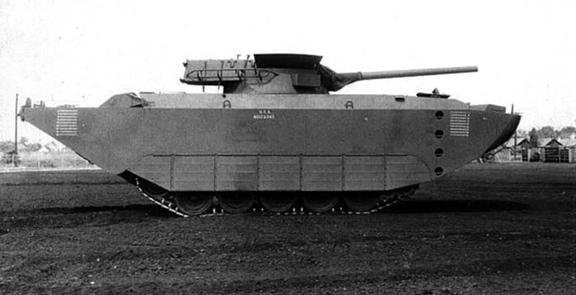
The basic layout for the T86 and T86E1
Marmon-Herrington also
converted a third M18 Hellcat tank destroyer into an amphibious
vehicle with a 105mm howitzer. This used the tracks for
propulsion. All three types of vehicles Marmon-Herrington
worked on were still undergoing tests when the war ended. The
projects were then cancelled.
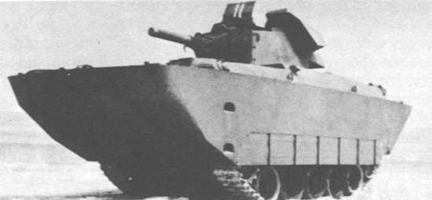
This is the T87 with the 105mm howitzer
installed.
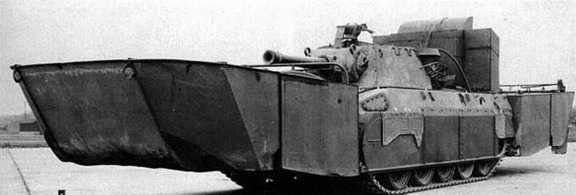
The U.S. Army issued a $352,000 contract in January 1945 for "Gun
Motor Cars T-87." This appears to have been for 250 sets of
detachable pontoons for the a 105mm armed M18. They were never
used.
|
Table 3 - Marmon-Herrington
Company's Major World War Two Contracts
The information below
comes from the "Alphabetical Listing of Major War Supply
Contracts, June 1940 through September 1945." This was
published by the Civilian Production Administration,
Industrial Statistics Division. Table added 5-22-2022. |
|
Product |
Contract Amount |
Contract Awarded
|
Completion
Date |
| Ordnance
Material - Navy |
$65,000 |
6-1940 |
7-1940 |
| Tanks - Navy |
$606,000 |
6-1940 |
3-1941 |
| Tanks -
Foreign |
$4,720,000 |
6-1940 |
3-1942 |
| Tanks -
Foreign |
$3,654,000 |
8-1940 |
9-1942 |
| Cars Command
- Foreign |
$116,000 |
8-1940 |
1-1941 |
| Tractors -
Foreign |
$315,000 |
8-1940 |
7-1941 |
| Tractors -
Foreign |
$1,467,000 |
8-1940 |
12-1941 |
| Tractors -
Foreign |
$105,000 |
8-1940 |
11-1940 |
| Winches -
Army |
$79,000 |
9-1940 |
12-1940 |
| Trucks - Army |
$62,000 |
10-1940 |
3-1941 |
| Winches -
Army |
$163,000 |
12-1940 |
4-1941 |
| Winches -
Army |
$86,000 |
12-1940 |
3-1941 |
| 1940 Total |
$11,438,000 |
|
|
| Tanks -
Foreign |
$823,000 |
1-1941 |
9-1942 |
| Trucks - Army |
$100,000 |
1-1941 |
3-1941 |
| Tanks -
Foreign |
$275,000 |
3-1941 |
7-1942 |
| Tanks -
Foreign |
$5,689,000 |
3-1941 |
12-1942 |
| Motor
Vehicles - Foreign |
$160,000 |
3-1941 |
6-1941 |
| Tanks -
Foreign |
$796,000 |
4-1941 |
3-1942 |
| Tanks -
Foreign |
$1,977,000 |
4-1941 |
2-1943 |
| Tanks -
Foreign |
$1,628,000 |
4-1941 |
12-1942 |
| Tractors -
Foreign |
$1,390,000 |
4-1941 |
4-1942 |
| Tractor Parts
- Foreign |
$322,000 |
4-1941 |
6-1941 |
| Aircraft
Material - Army |
$2,032,000 |
6-1941 |
3-1942 |
| Tractor Parts
- Foreign |
$66,000 |
6-1941 |
9-1941 |
| Tank
Equipment - Foreign |
$99,000 |
7-1941 |
1-1942 |
| Tanks - Army |
$78,000 |
10-1941 |
1-1942 |
| Tanks - Light
|
$6,218,000 |
10-1941 |
7-1942 |
| Tanks - Parts
- Foreign |
$66,000 |
11-1941 |
4-1942 |
| Winches -
Army |
$4,962,000 |
11-1941 |
7-1942 |
| Tank Parts -
Foreign |
$166,000 |
12-1941 |
3-1942 |
| Tank Parts -
Foreign |
$467,000 |
12-1941 |
4-1943 |
| Tank Parts -
Foreign |
$114,000 |
12-1941 |
8-1943 |
| 1941 Total |
$27,428,000 |
|
|
| 1940 and
1941 Total |
$38,866,000 |
|
|
| Tanks - Army |
$135,000 |
1-1942 |
6-1942 |
| Light Tanks
T9 - Army |
$19,500,000 |
1-1942 |
1-1943 |
| Trucks -
Treasury |
$55,000 |
2-1942 |
9-1943 |
| Tractors -
Army |
$60,000 |
1-1942 |
8-1942 |
| Kits
Conversion - Army |
$504,000 |
1-1942 |
7-1942 |
| Auto Parts -
Army |
$341,000 |
4-1942 |
8-1942 |
| Car Parts -
Army |
$65,000 |
4-1942 |
6-1942 |
| Light Tanks
T9E1 - Army |
$9,349,000 |
4-1942 |
3-1944 |
| Tank Parts -
Foreign |
$85,000 |
4-1942 |
8-1942 |
| Vehicle Parts
- Army |
$251,000 |
5-1942 |
9-1942 |
| Trucks -
Treasury |
$784,000 |
7-1942 |
9-1943 |
| Truck Parts -
Army |
$165,000 |
9-1942 |
12-1942 |
| Trucks - Army |
$58,000 |
12-1942 |
1-1943 |
| Winch Parts -
Army |
$111,000 |
12-1942 |
1-1943 |
| Tank Parts -
Foreign |
$94,000 |
12-1942 |
1-1943 |
| Tank Parts
T9E1 - Army |
$114,000 |
2-1943 |
6-1944 |
| Motor
Vehicles - Army |
$116,000 |
3-1943 |
6-1943 |
| Truck
Assemblies - Army |
$409,000 |
5-1943 |
5-1944 |
| Tank Parts -
Foreign |
$63,000 |
9-1943 |
10-1943 |
| Trucks - Army |
$4,500,000 |
10-1943 |
12-1944 |
| Tank Hull
Assemblies - Navy |
$374,000 |
2-1944 |
5-1944 |
| Trucks - Army |
$10,199,000 |
3-1944 |
5-1944 |
| Motor Vehicle
Parts - Treasury |
$91,000 |
4-1944 |
11-1944 |
| Tractor
Trucks - Army |
$1,054,000 |
11-1944 |
6-1945 |
| Gun Motor
Cars T-87 - Army |
$352,000 |
1-1945 |
4-1945 |
| Ordnance
Equipment - Army |
$100,000 |
1-1945 |
8-1945 |
| Truck Tractor
Convern - Army |
$1,224,000 |
1-1945 |
6-1945 |
| Spring
Assemblies - Army |
$55,000 |
4-1945 |
8-1945 |
| Trucks -
Treasury |
$600,000 |
8-1945 |
2-1946 |
| Truck
Tractors - Treasury |
$277,000 |
8-1945 |
1-1946 |
| Total |
$89,951,000 |
|
|
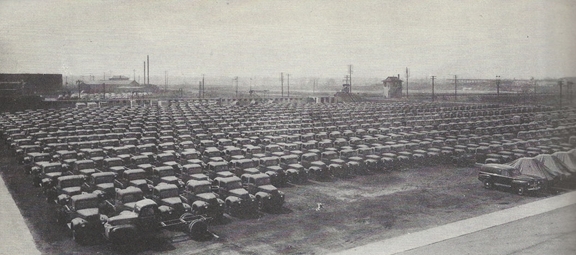
In
1942 the Marmon-Herrington parking lot was filled with 4x4 trucks.
Most, if not all, of the vehicles were Ford-built commercial trucks
converted to four-wheel drive by the company at its Indianapolis plant.
I count approximately 700 trucks awaiting shipment in this photo.
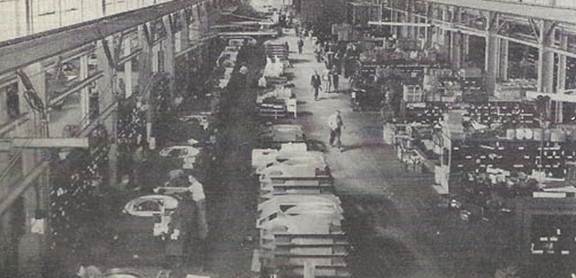
Marmon-Herrington of Indianapolis has the distinction of being the only
American company to have both tanks and trucks come down the same
assembly line. In this 1943-44 era photo, M22 Locust light
tanks are coming down the assembly line.
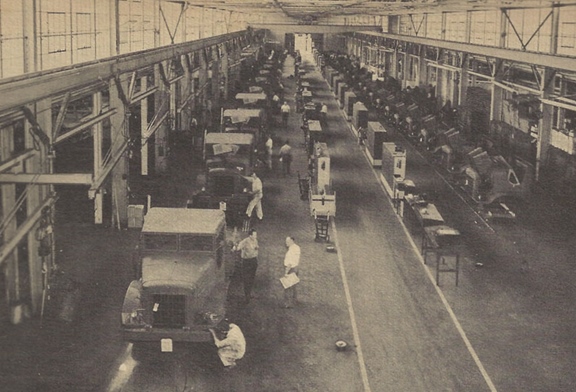
In this 1944 era photo, there are now M426 five-ton 4x2 tractors coming down the same assembly line.
These were International Harvester H-5-11 tractors built by
Marmon-Herrington under license. In 1945 Marmon-Herrington would
convert 1,200 IH-built M425 light duty tractors into M426 heavy duty
tractors.
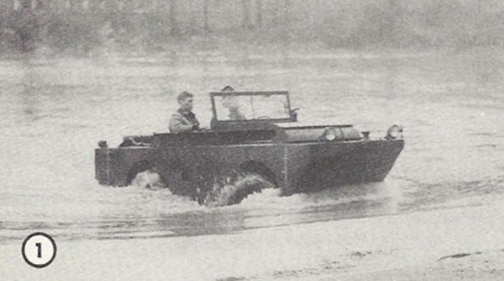
Marmon-Herrington and Ford Motor Company
competed against each other for the production of what became the Ford
GPA. Marmon-Herrington was chosen to compete with Ford, which
already had contracts for the Jeep, again because of its experience in
four-wheel drive vehicles. Its design was composed of a unibody
construction that ended up being 400 pounds heavier than the Ford entry,
which won the competition. During the competition, the vehicle was
called the QMC-4 1/4-Ton Truck Light Amphibian.
Here is the Marmon-Herrington
version, which lost the competition during testing.
Four-Wheel Drive Components
- Marmon-Herrington supplied four-wheel
drive trains to convert Ford trucks for the British Commonwealth.
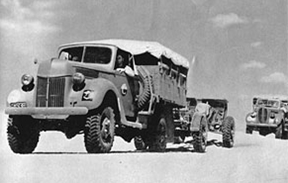
Armored Cars - The
Marmon-Herrington Armored Car consisted of a Canadian-built Ford 3-ton
truck that was then shipped to South Africa. There, they were fitted with
a Marmon-Herrington four-wheel-drive train, and had the necessary armor
and armament added. The vehicles were known as Marmon-Herrington
Armored Cars, even though the company only supplied the four-wheel-drive
train. A total of 5,746 armored cars in several versions were built by the
South Africans. Today 33 still exist, all
outside the United States. They served not only in World War Two, but also in
the Indonesian National Revolution, the 1948 Arab-Israeli War, the
Turkish Invasion of Cyprus, and the Rhodesian Bush War.
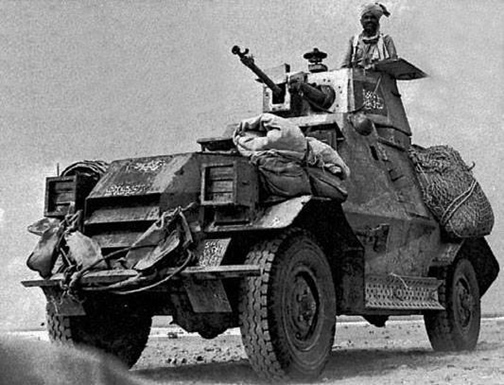
A Marmon-Herrington Mark III Armored Car manned by Indian troops during
WWII.
World War Two Ford Truck Conversions -
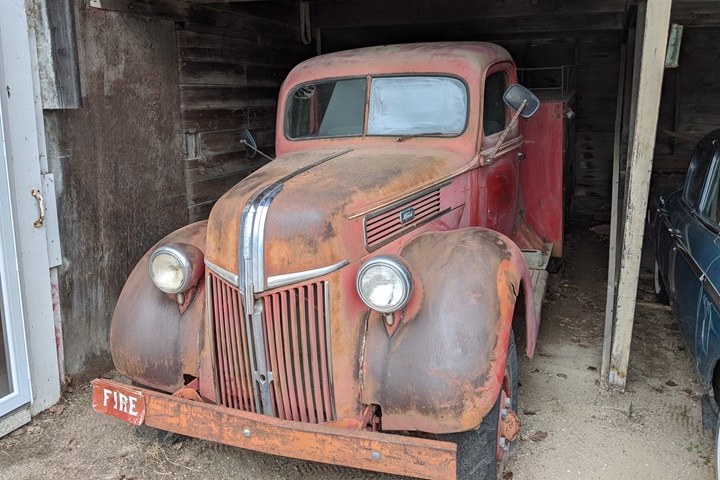
This 1940 Ford V-8 truck is in storage
awaiting restoration at the Nokomis & District Museum in Nokomis, SK,
Canada. During World War Two it served as a crash truck at the
R.C.A.F. base in Defoe, SK. This was home of the No. 5 Bombing and
Gunnery School between 1941-1945. After Ford built the truck, it
was shipped to Marmon-Herrington in Indianapolis, IN where it was
converted to an all-wheel configuration. Once this was complete,
it was then shipped to LaFrance Fire Engine and Foamite, Ltd in Toronto,
ON where the rear body and emergency equipment was installed. Then
it was shipped to Defoe, SK where it served during the war. Photo
and information courtesy of Michael Marb.
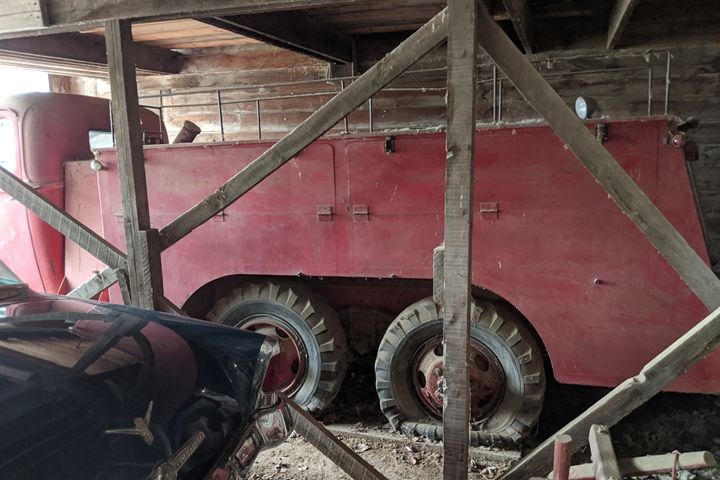
Photo courtesy of Michael Marb.

Photo courtesy of Michael Marb.
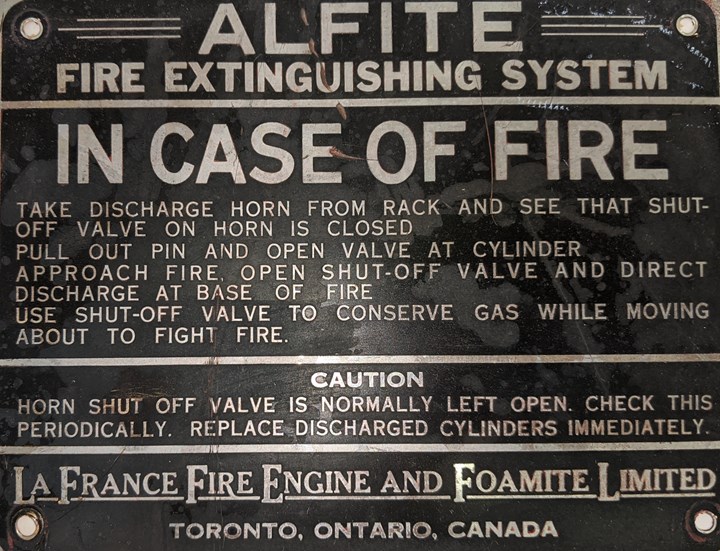
Photo courtesy of Michael Marb.
Pre-World War Two Tanks 1935-1942 - Marmon-Herrington built seven
different styles of tanks similar to the CTMS tank shown below, displayed at
the New Jersey National Guard Annex in Lawrenceville, NJ. About
300 total tanks were built; being sold to the US Marine Corp, The
Netherlands for service in the Dutch East Indies, and several Latin
American countries. The US Marines purchased 15; and 240 were
taken by the US Army, which were used for training in Alaska.
Today, only seven of the tanks remain worldwide. Five are in the
United States, one in Guatemala, and one is at an unknown location.
The Marmon-Herrington CTMS-1TB1 Light Tank
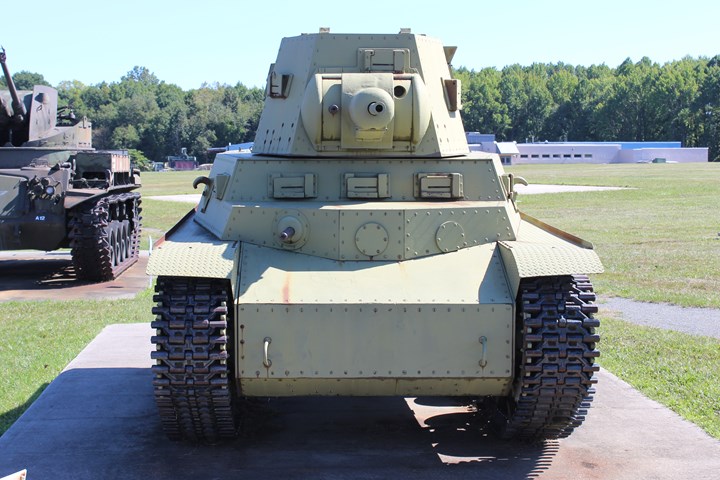
This is serial number 791, located in the artillery and armor
section of the New Jersey National Guard Museum Annex at
Lawrenceville, NJ. This formerly served with the Guatemalan
Army. Author's photo.
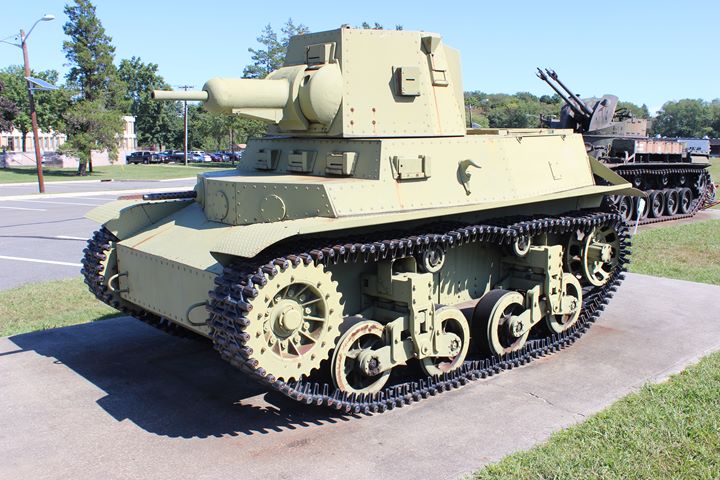
This design is typical of the pre-World
War Two light tank design. Differences in the other tanks
included crew size, armament, and location of the turret.
Author's photo.
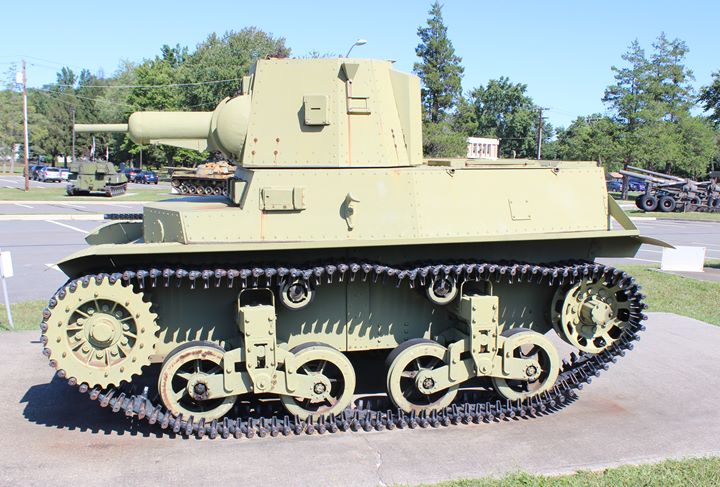
The information on the museum placard
for this particular tank is incorrect. It states that the CTMS
tank served with American forces in Alaska. The American Army
in Alaska used the CTLS, and the turret was offset to the right, or
left, of the tank. Author's photo.
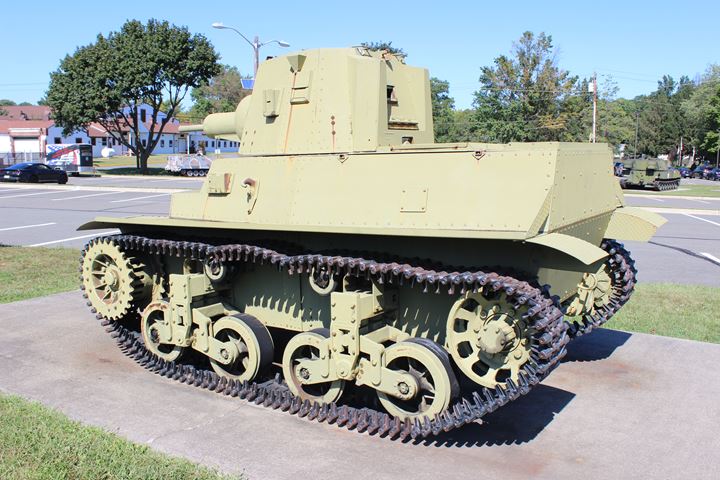
Author's photo.
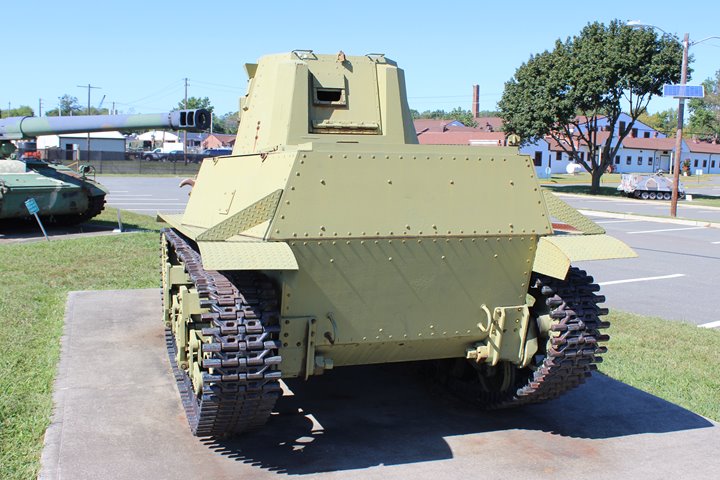
Author's photo.
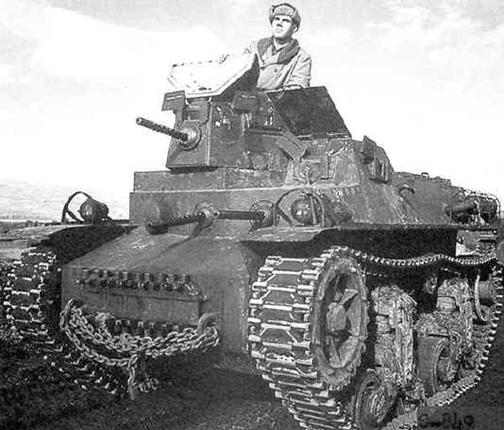
This CTLS light tank operated by the US
Army in Alaska had the turret offset to the right side of the tank.
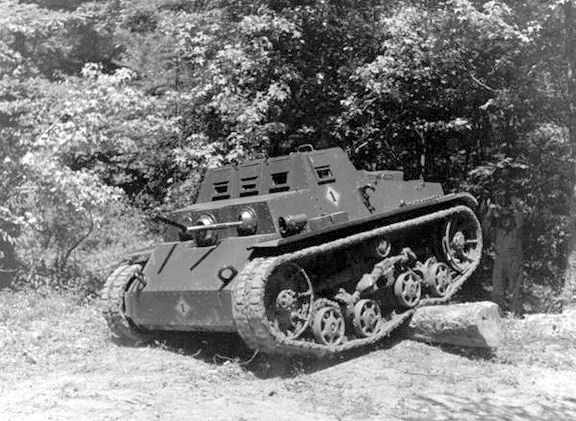
The Marmon-Herrington CTL-3A did not
have a turret. Five CTL-3As were delivered to the USMC in 1939
and were taken out of service in 1943.
World War Two M22 Locust Tank -
Marmon-Herrington's largest tank production run was the M22 Locust
Light Tank. The company built 830 during 1943 and 1944.
While the M22 was not assigned to any operational units with the US
Army, 260 were shipped to Great Britain under Lend-Lease, where
eight were involved on the British attack on the Rhine River.
After World War Two, the Egyptians used a sizeable number of them in the 1948 Arab-Israeli War.
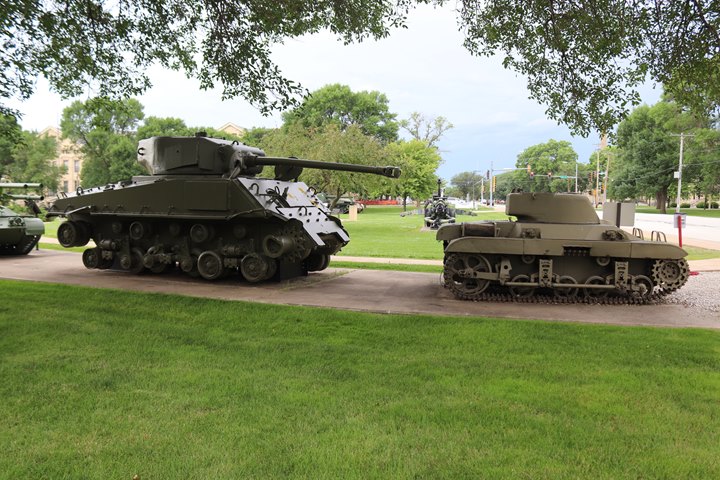
How small is an M22 Locust light tank
compared to a M4A3(76)HVSS Sherman medium tank? Pretty small,
as seen here at the Rock Island Arsenal in IL. Author's photo
added 8-12-2019.
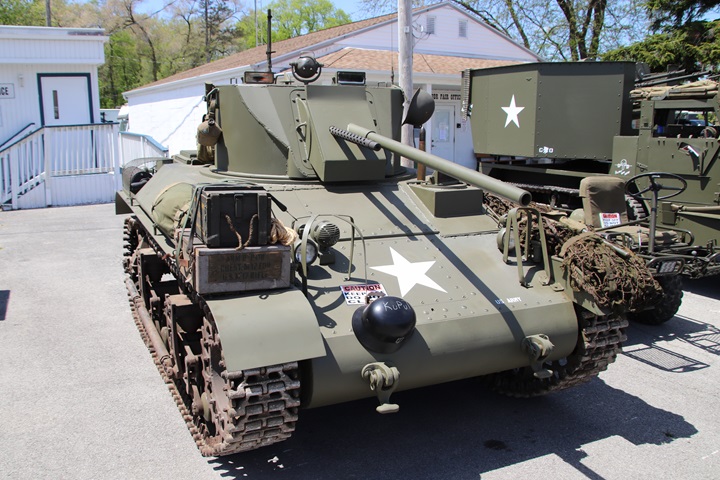
This Marmon-Herrington M22 Locust light
tank was on display at the 2021 Findlay Military Show in Findlay,
OH. This tank was just recently restored, and this was its
public debut. Author's photo added 5-16-2021.
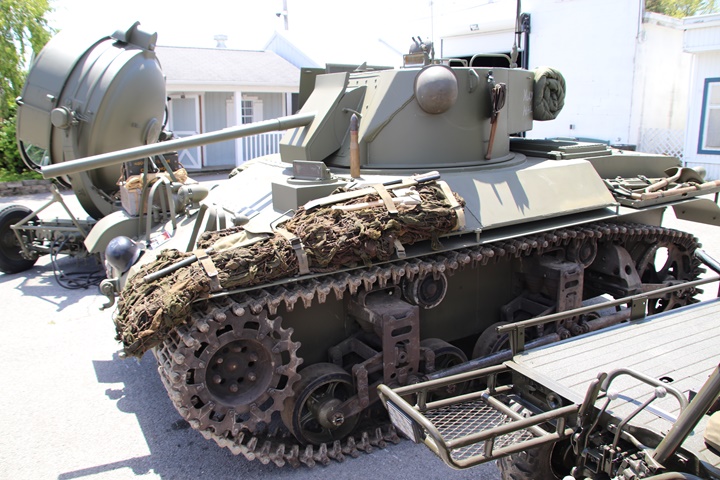
Author's photo added 5-16-2021.
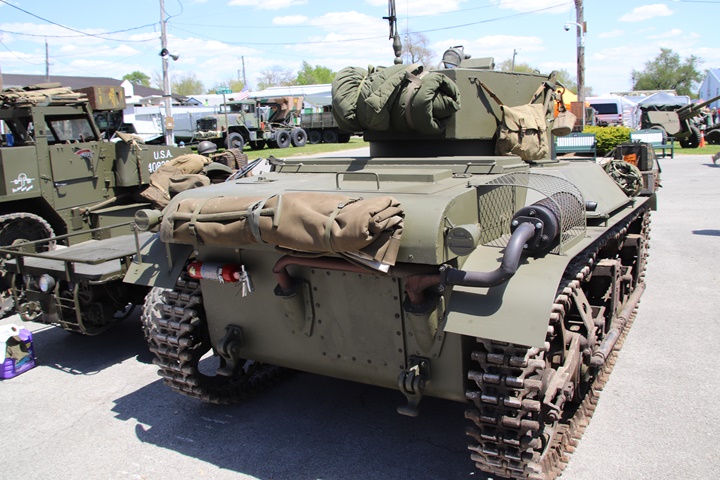
Author's photo added 5-16-2021.
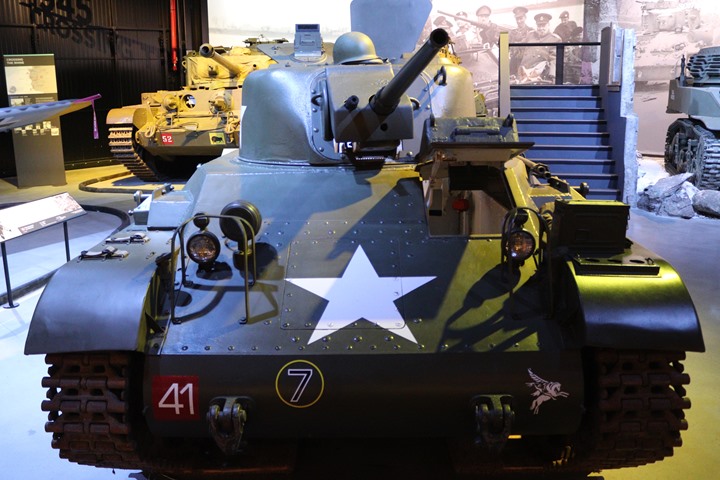
The next three photos are of a
Marmon-Herrington M22 Locust light tank that is on display at the
American Heritage Museum in Hudson, MA. Author's photo added
8-12-2019.
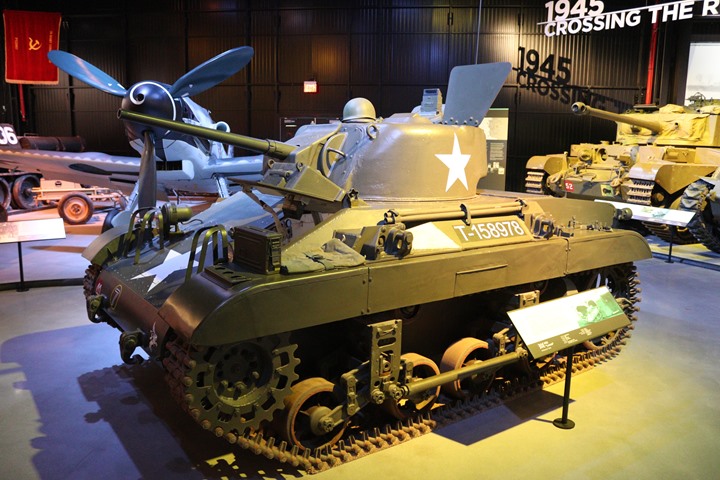
Author's photo added 8-12-2019.
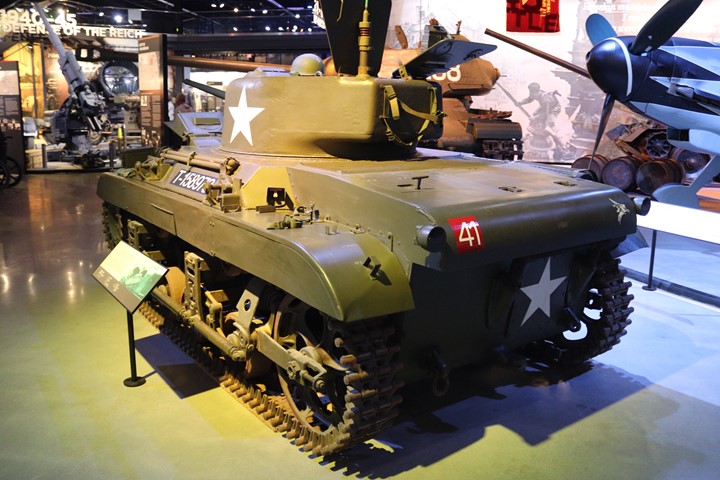
Author's photo added 8-12-2019.
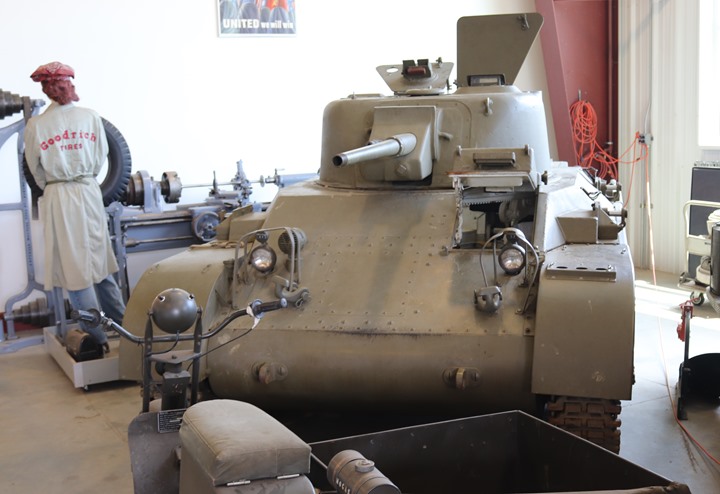
This M22 Locust tank is on display at
the Museum of American Armor in Old Bethpage, Long Island, NY.
It is one of many World War Two era armored vehicles and trucks the museum has, all of which are in running condition. Author's
photo added 6-12-2018.
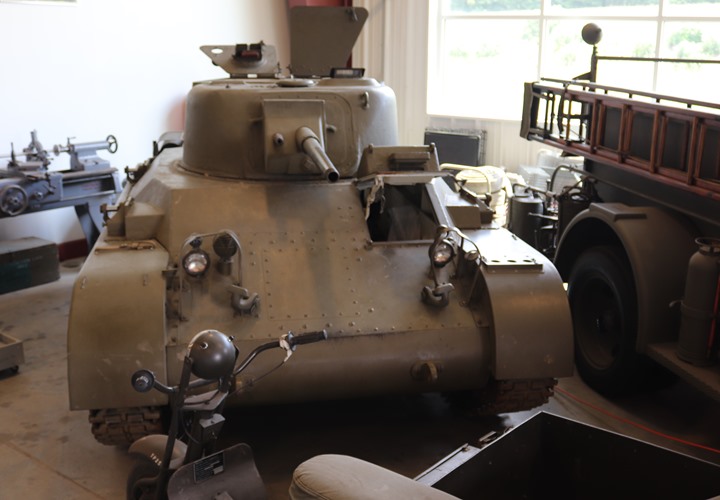
Author's photo added 6-12-2018.
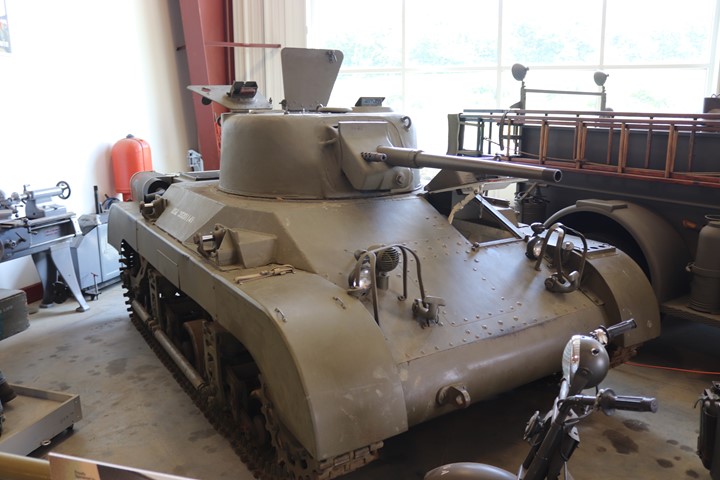
Author's photo added 6-12-2018.
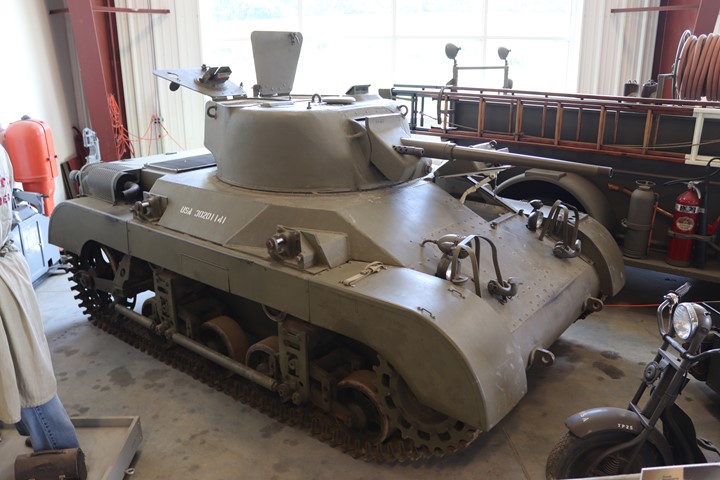
Author's photo added 6-12-2018.
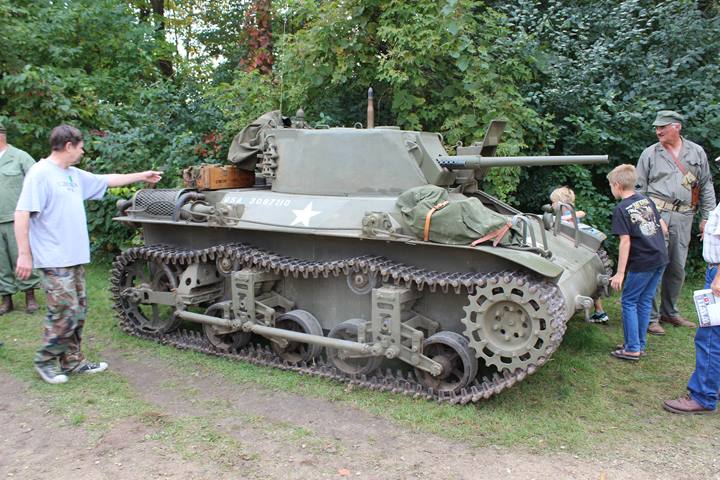
This M22 Locust tank is owned by the
Roberts Armory in Rochelle, IL. The author's photograph was
taken at the 2015 Rockford, IL WWII reenactment. Note its size
compared to the on-looking spectators.
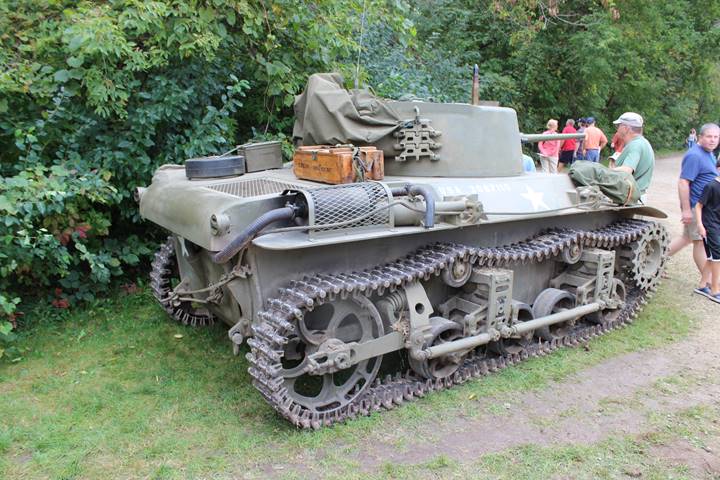
Author's photo.
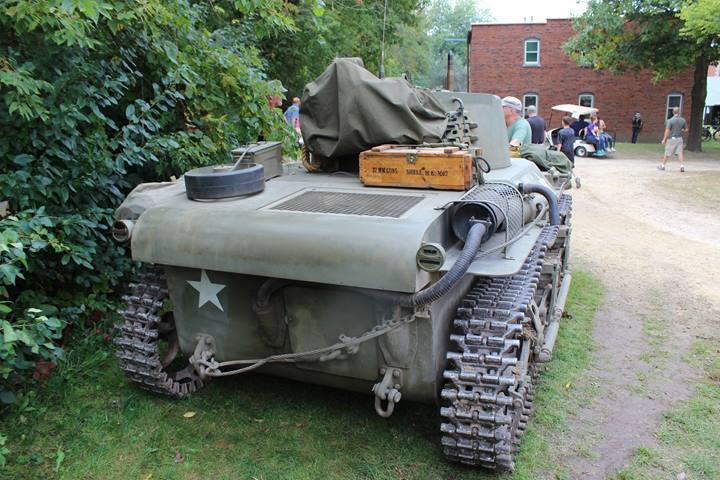
Author's photo.
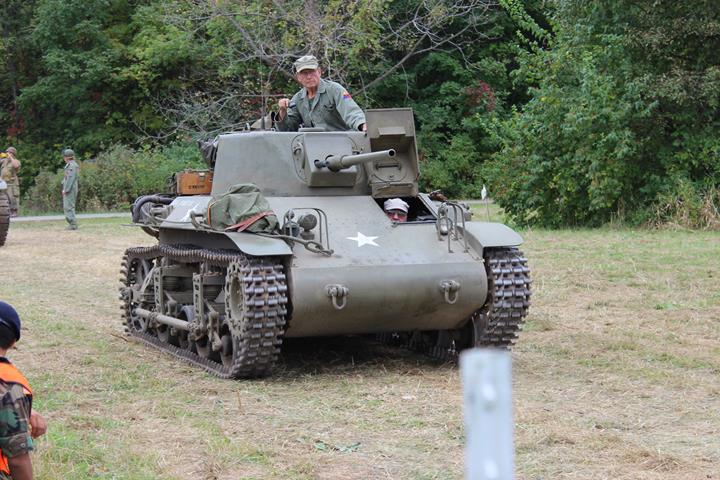
The M22 squeezed a three-man crew into
the vehicle. There was the driver and tank commander/loader
seen here, along with a gunner for the 37mm cannon. Author's
photo.
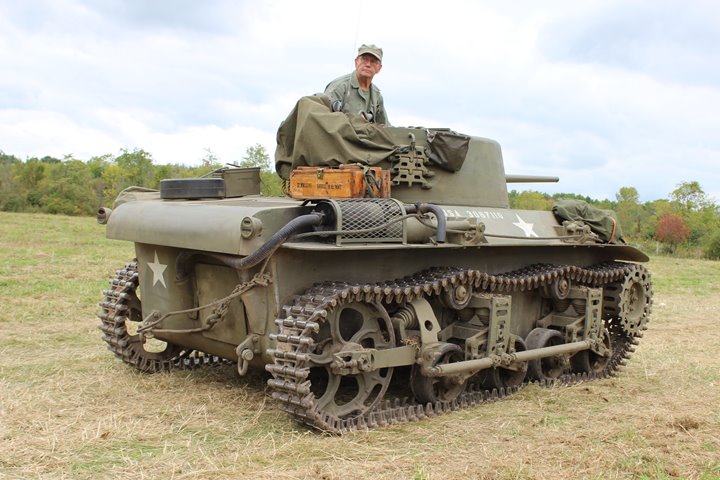
Author's photo.
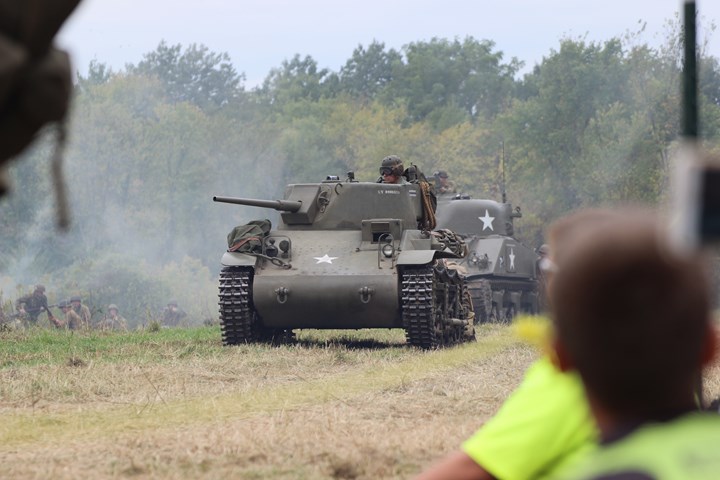
Author's photo.
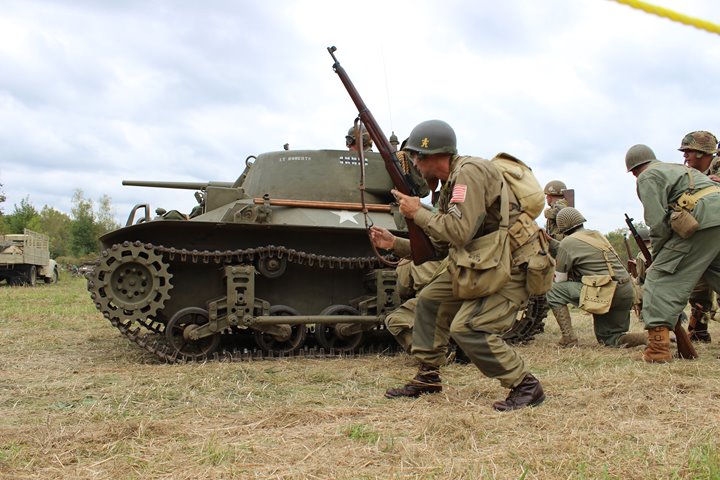
The relative size of the M22 to its
supporting infantrymen is evident. Author's photo.
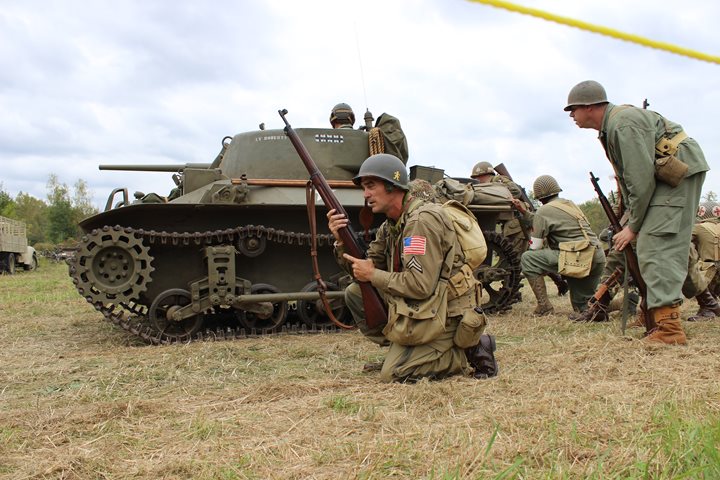
Author's photo.
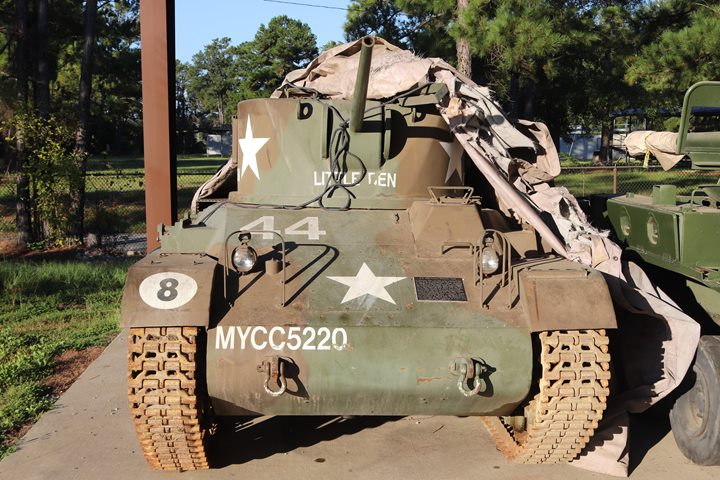
This M22 Locust is part of the Armor and
Cavalry collection at Fort Benning, GA. Author's photo added
9-21-2018.
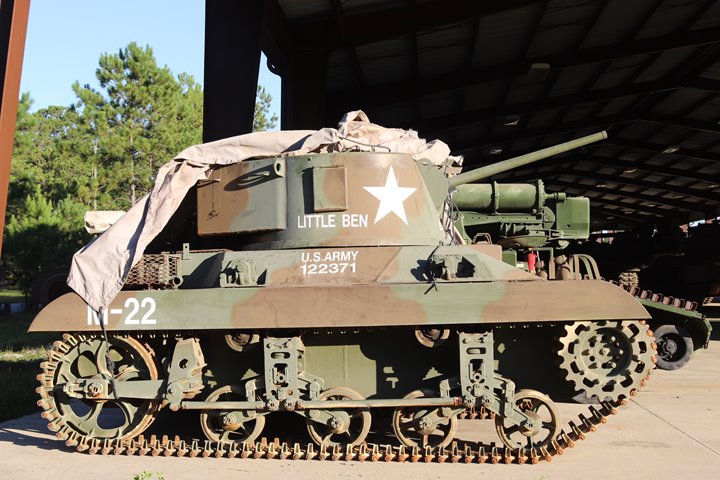
Author's photo added 9-21-2018.
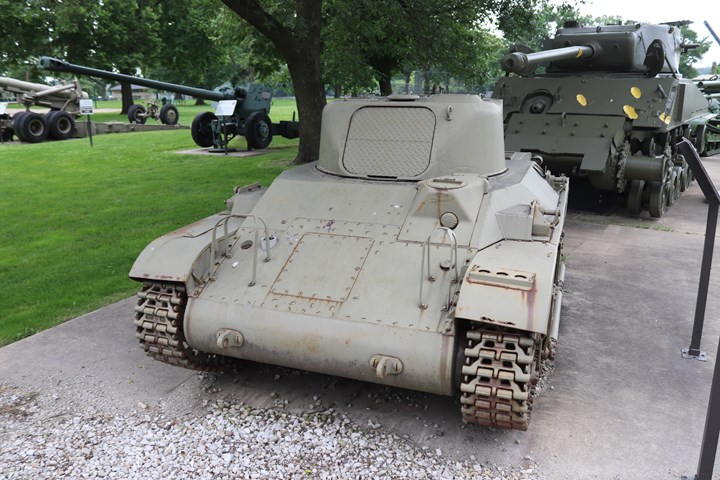
This M22 Locust light tank is on display
at the Rock Island Arsenal in IL. Behind it is an M4A3 Sherman
tank. Author's photo added 8-12-2019.
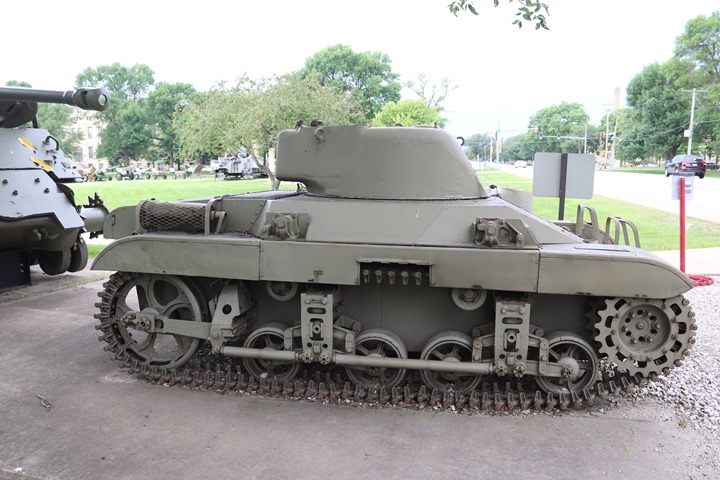
Author's photo added 8-12-2019.
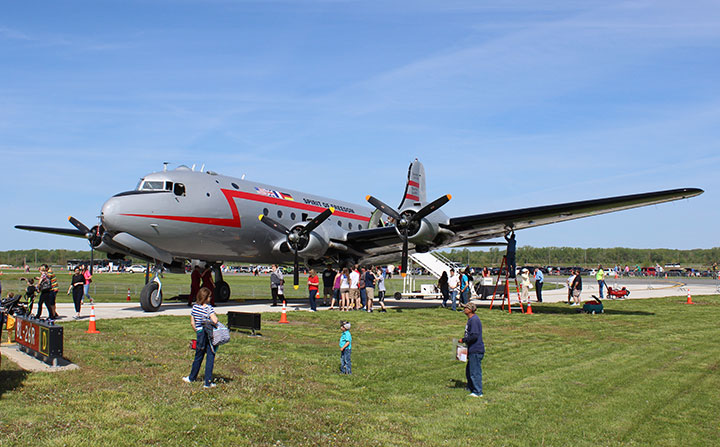
The M22 was designed with the intention of
being a light tank that could support airborne troops upon landing.
One of the methods of delivering the M22 to the airborne battlefield was
to remove the turret, and then hook the turret and body of the tank to
the bottom of a C-54. Then after the paratroopers secured a
suitable landing field for the C-54, the M22 tanks could be delivered
and re-assembled for support. British troops found that they could
attach the turrets to the tank in about ten minutes using the C-54's
internal hoist. Ten minutes is a long time under fire to be
putting a tank together. All of this assumed that the paratroopers
target area would include a landing field large enough to land the C-54.
It no doubt sounded like a good idea at the time. It was never
implemented. Author's photo.
What could have been...
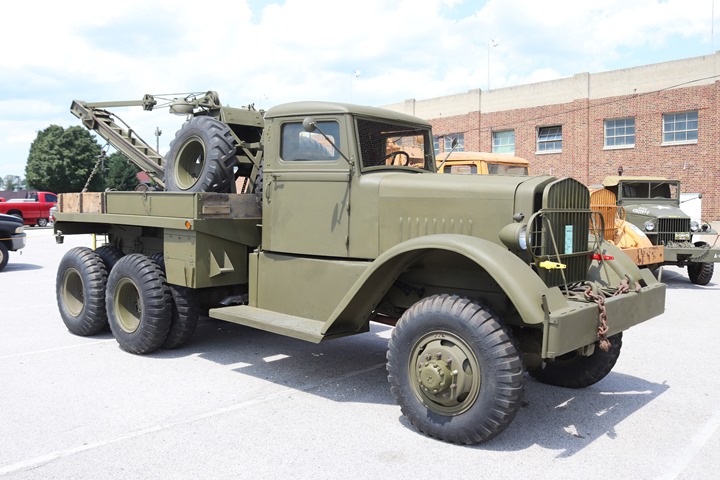
The Ward-LaFrance M1 wrecker owes its
heritage to the 1935 Marmon-Herrington TL31-6 wrecker. The later DSD600-6 wrecker
was designed by
Marmon-Herrington, which was produced for Russia. Corbitt Truck
Company built the first three prototypes. Then Ward-LaFrance won
the production contract. It has to be assumed that
Marmon-Herrington was included in the bidding due to its all-wheel drive truck experience. It could have been a victim of its own success
in obtaining several different contracts for tanks and trucks in the
late 1930's and early 1940's. Its assembly lines were busy with
orders for a multitude of products for several countries. At the
same time, the United States started ramping up its purchase of military
products. Marmon-Herrington also missed out on building the
half-track with a powered front axle, which it invented in 1936. Four
other truck manufacturers began production of the halftrack in 1941. It wasn't
until 1943 that it had the capacity to start production of the American M22 tank.
Author's photo added 9-29-2019.
Post-World War Two Military Fire
Apparatus:
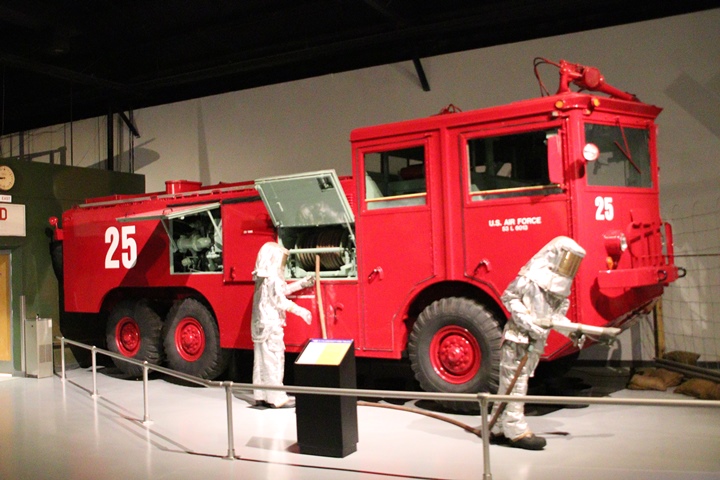
This is American LaFrance O-11A fire and
crash truck which is on display at the Museum of Aviation at Robins AFB,
GA. The O-11 was used by the United State Air Force starting in
1952 and continuing up into the 1970s. It was the main fire and
rescue truck at Air Force bases world wide including Vietnam.
Author's photo added 6-14-2022.
Marmon-Herrington also built an unknown number
of these units for the U.S. Air Force.
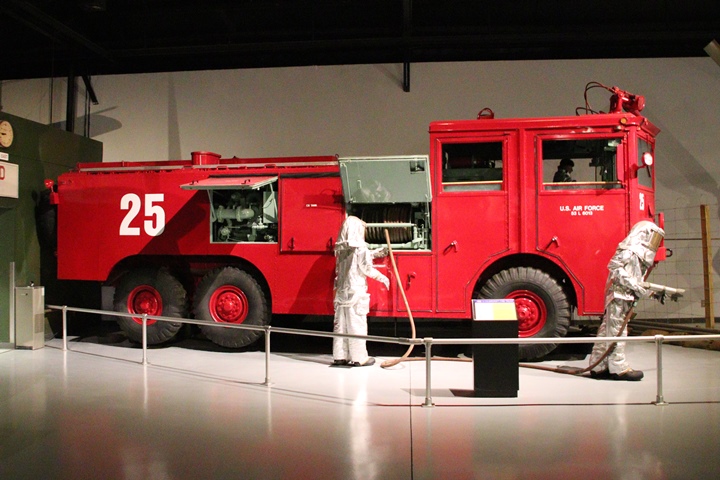
There was an O-11, O-11A, and O-11B in the
series each of which had various upgrades to the equipment.
Depending on the source, there was either 1,100 or 1,800 units built by
both American LaFrance and Marmon-Herrington. Author's photo
added 6-14-2022.
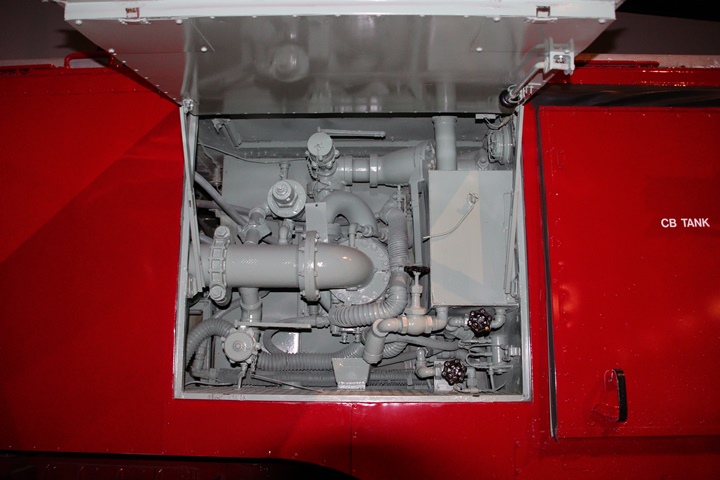
Author's photo added 6-14-2022.
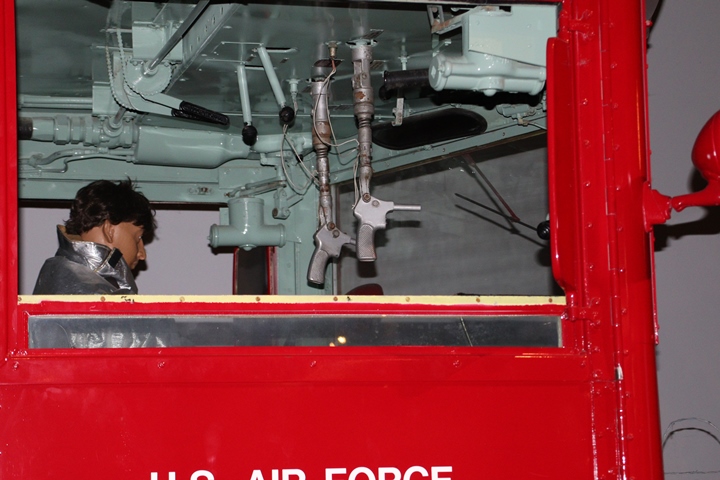
Author's photo added 6-14-2022.
"Ten Years Before Pearl Harbor"
This 1944 booklet published by
Marmon-Herrington gives excellent insight into the company's preparation
before World War Two, and the many different products it produced during
the war. Being written by Marmon-Herrington, it is a primary
source document.
Thank you to Bill Kreiner for sending this to me. This has been
such a revelation, as in the past it has been hard to find information
on Marmon-Herrington. It has become a forgotten and ignored company
by local Indianapolis historians. It is as though the company was
writing the information below just so I could publish it 75 years later.
Not only does it tell its story during World War Two, but also how it
prepared for the war starting at its inception in 1931.
This is a must read for the serious
Marmon-Herrington historian! It is a fascinating story.
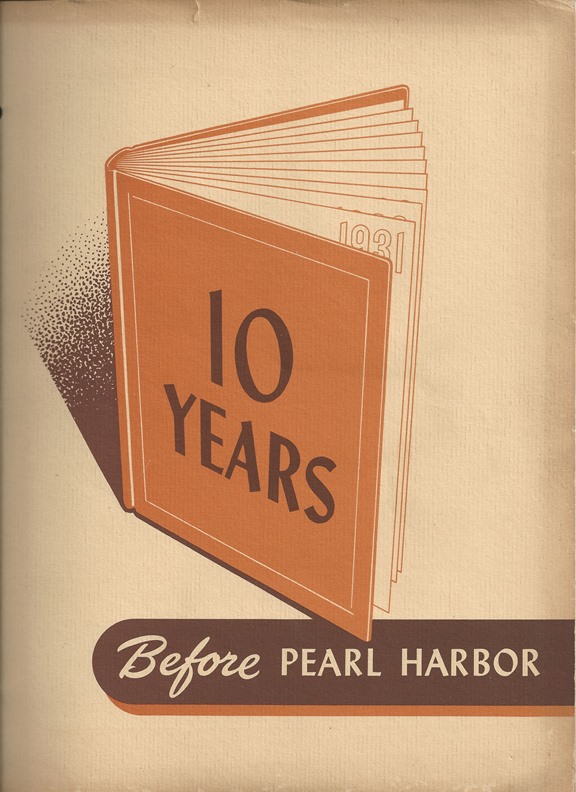
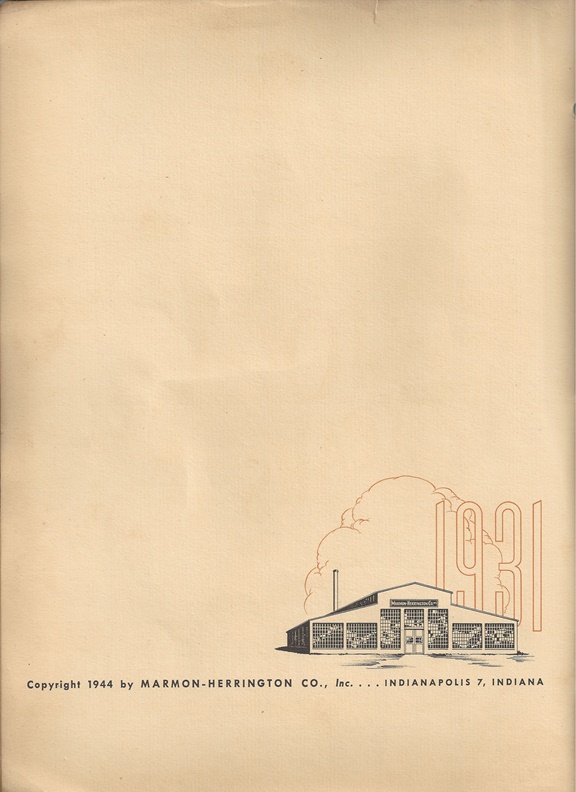
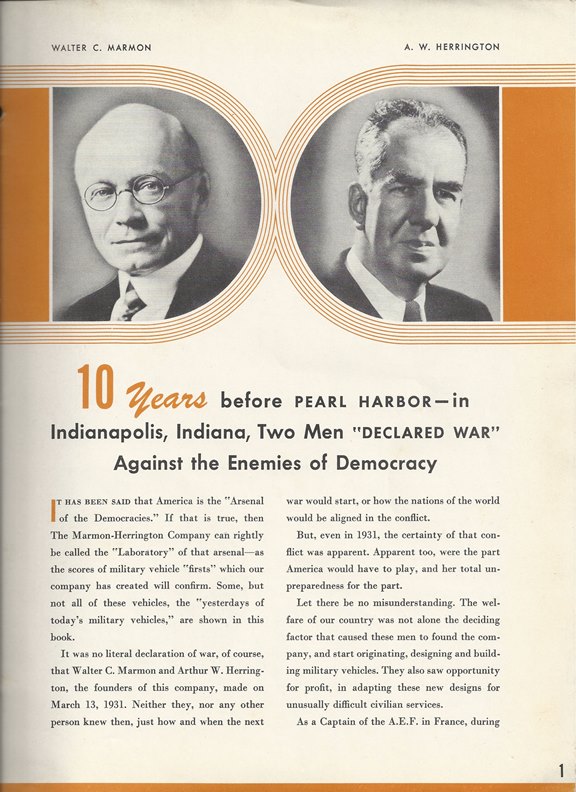
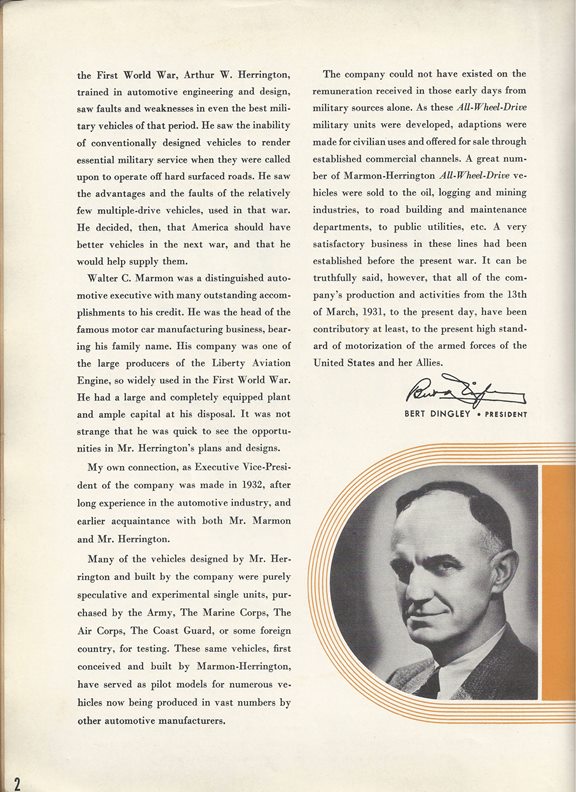
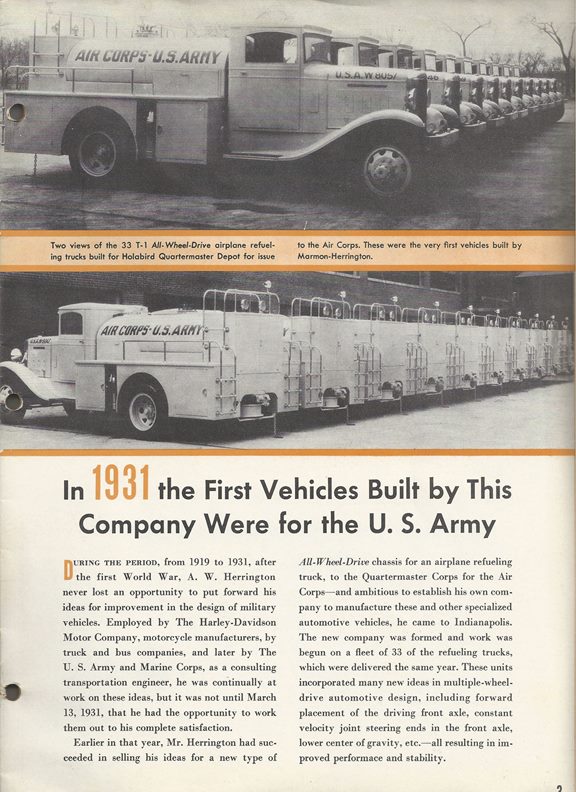
This page explains that the first 33 vehicles
built by the new Marmon-Herrington
Company in 1931 were all-wheel drive refueling
trucks for the Army Air Corps.
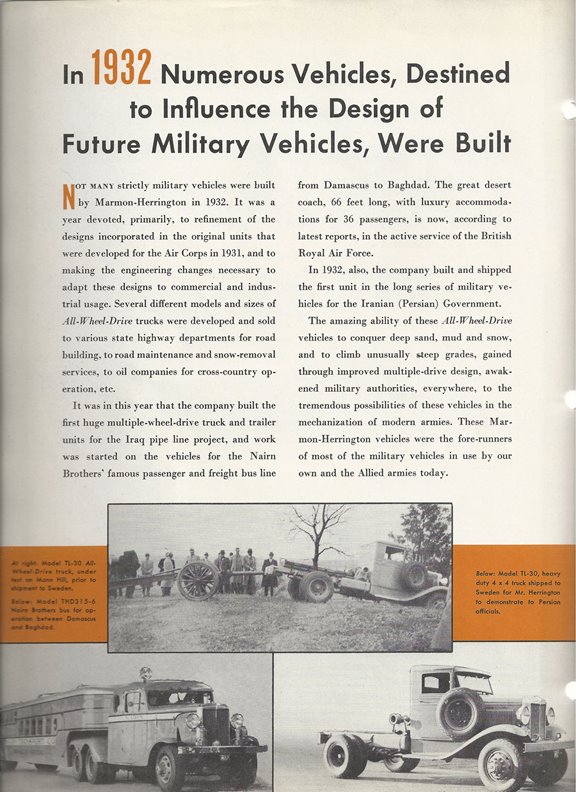
Marmon-Herrington very aggressively pursued foreign customers. In 1932 Iran became a long lasting and
important customer of the company's products.
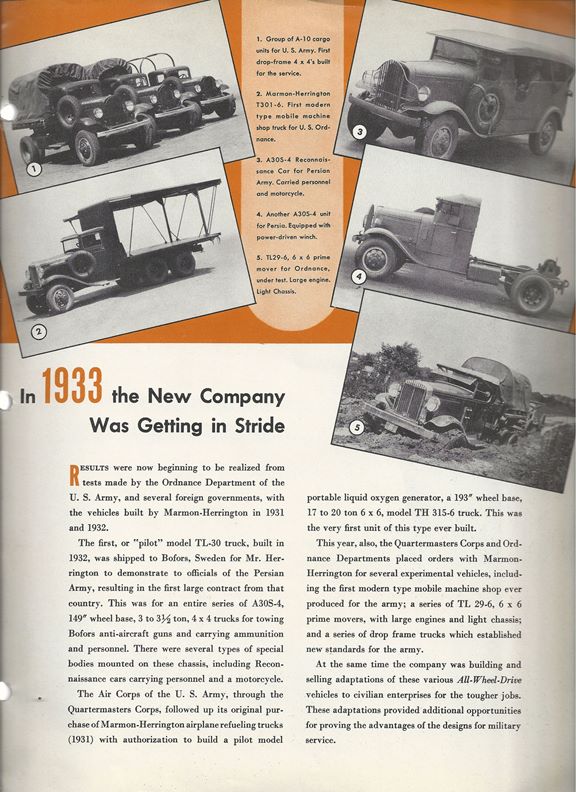
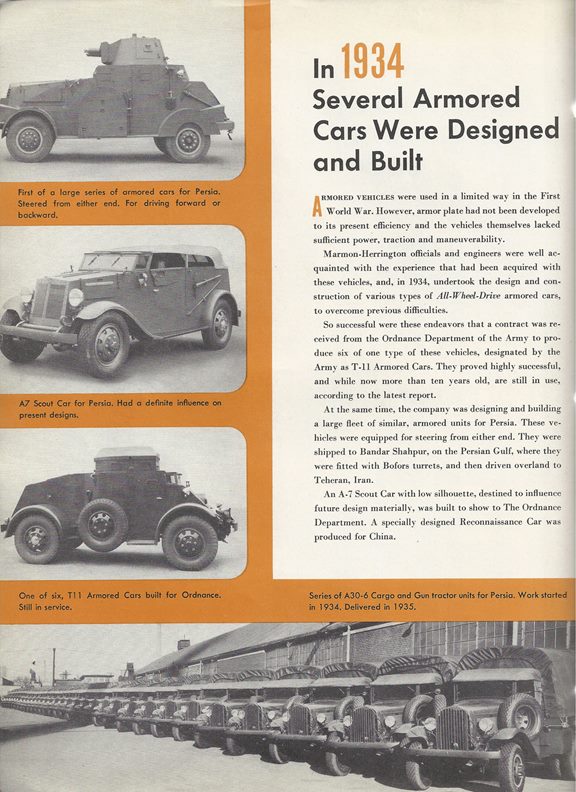
In 1934 Marmon-Herrington designed and then
built six T-11 4x4 armored cars for U.S. Army Ordnance. This was
one of several types of armored cars it developed in 1934.
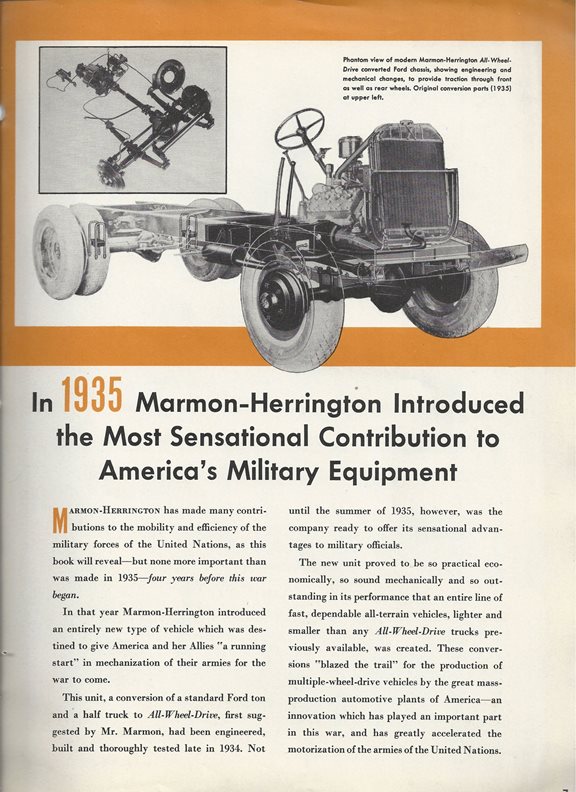
In 1935 Marmon-Herrington All-Wheel Drive is
officially introduced for military products.
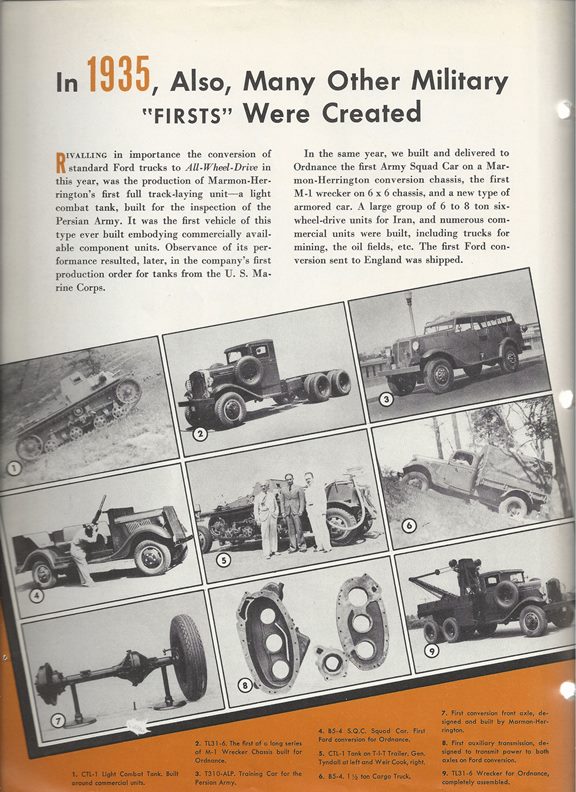
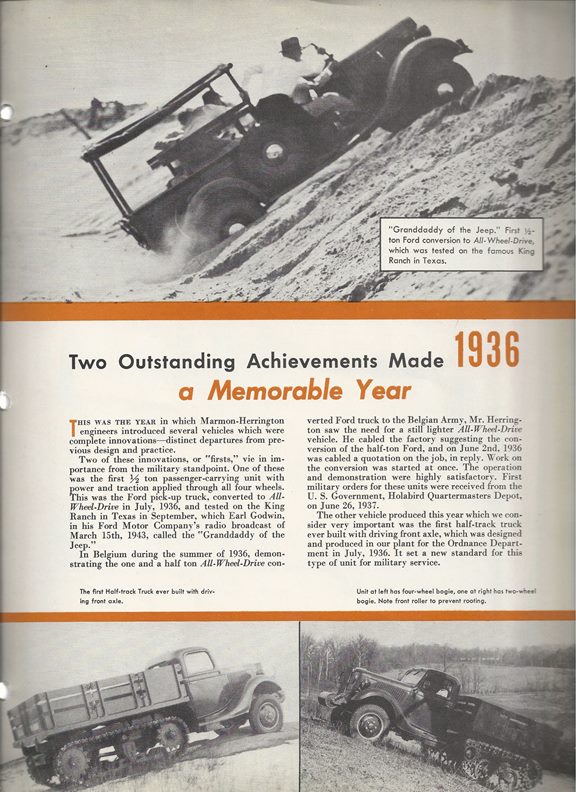
1936 was an important year for
Marmon-Herrington, as it designed and built the first half-track with a
powered front axle. It also converted a 1/2-ton Ford truck to
All-Wheel Drive. This eventually led to the Jeep and the
many other four-wheel drive trucks that were produced during World War
Two.
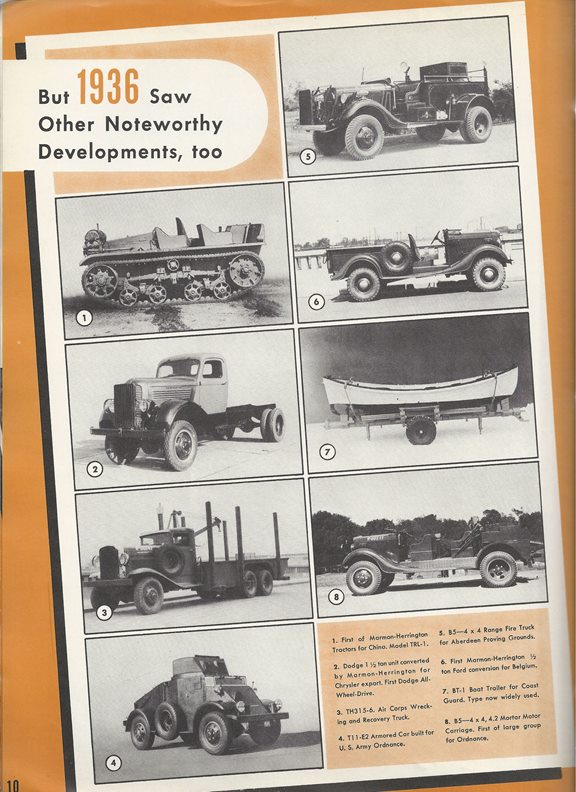
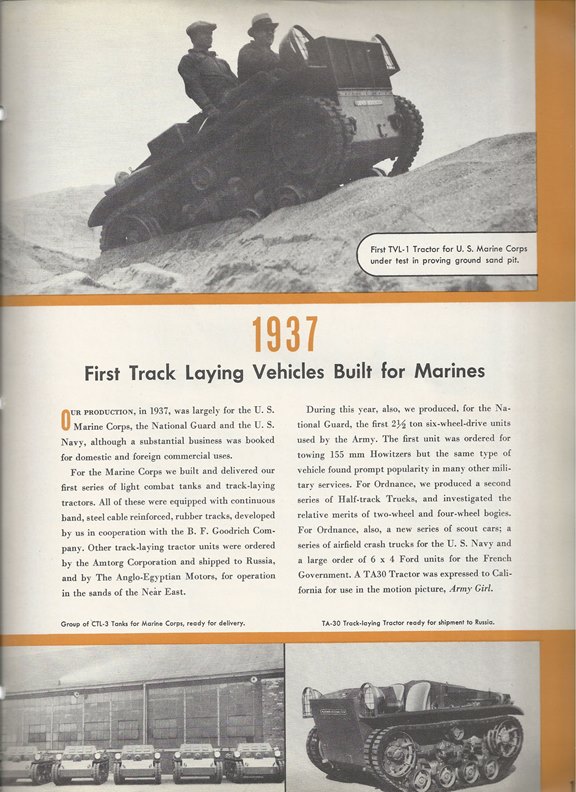
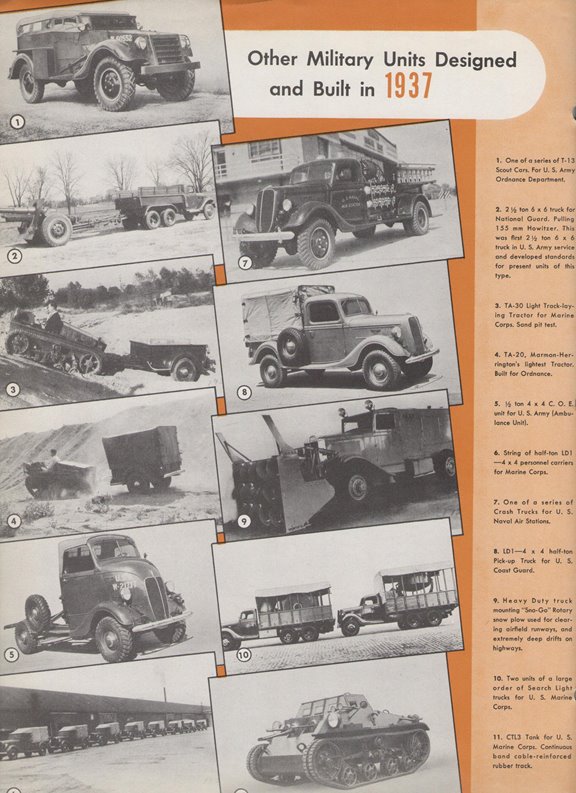
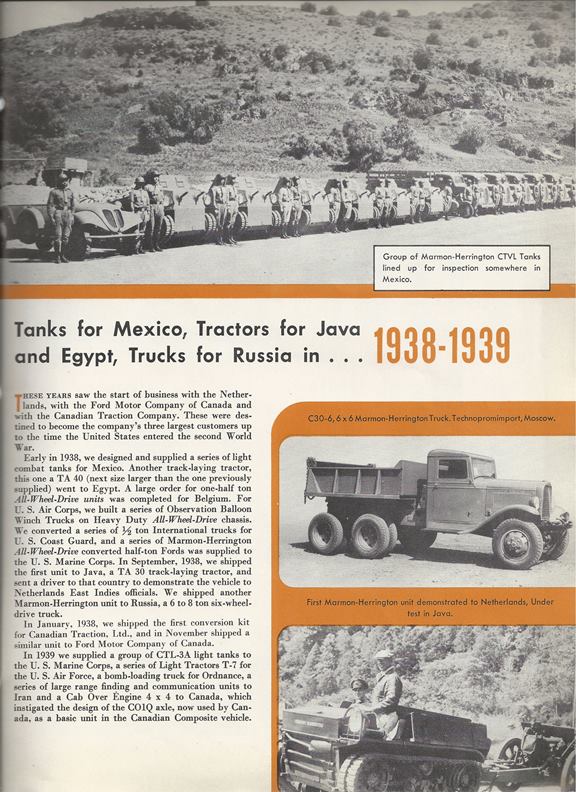
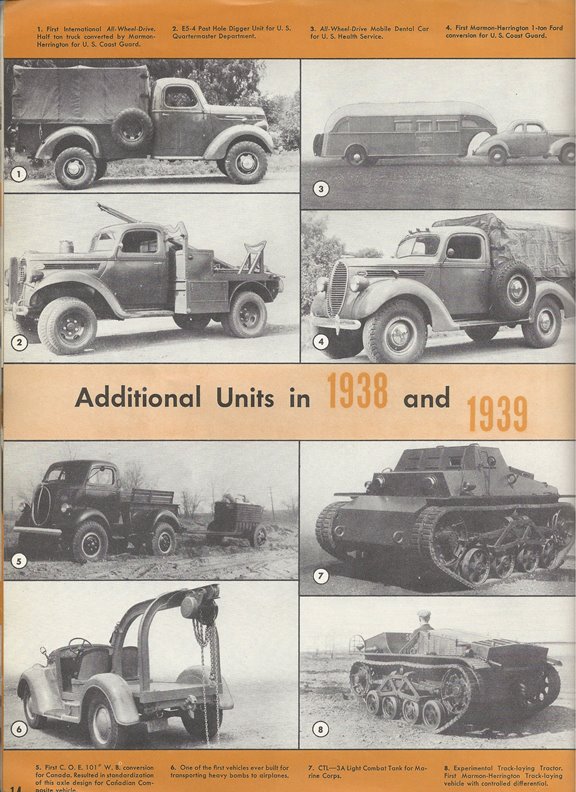
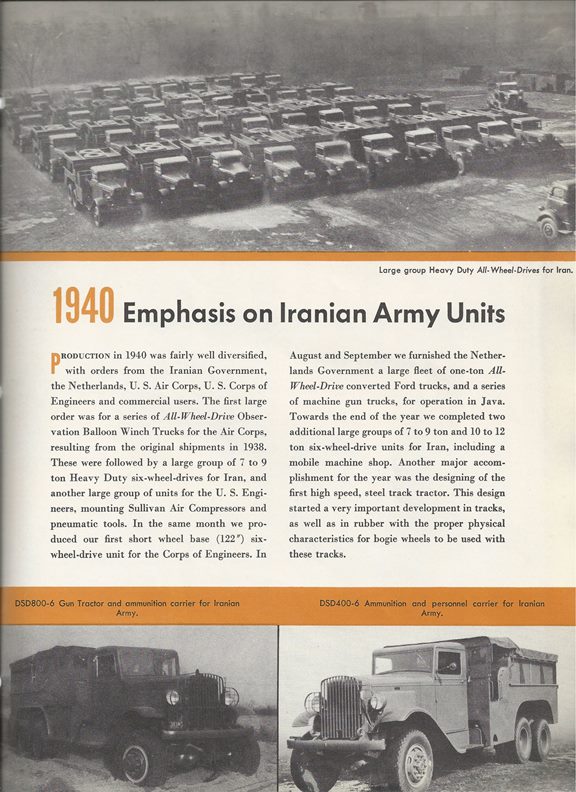
There are 42 trucks shown in the photo at the
top of the page. Forty of them are the DSD400-6 Ammunition and
Personnel Carriers for Iran.
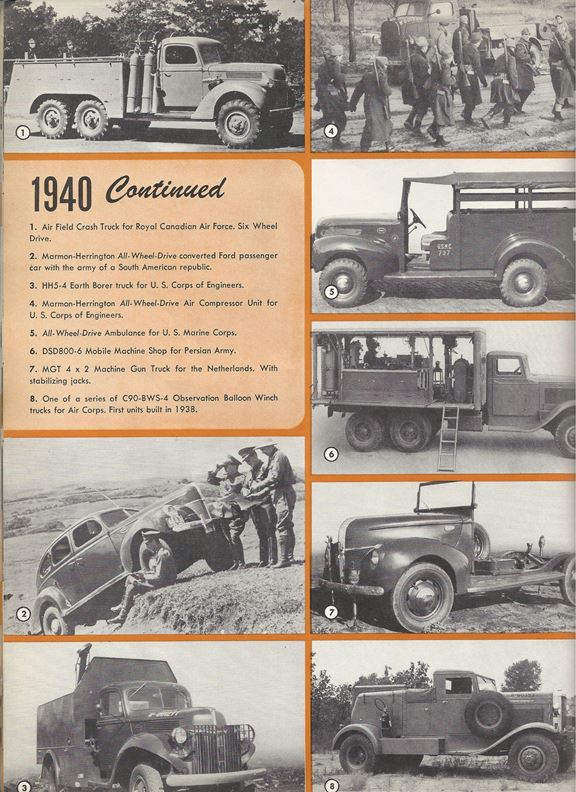
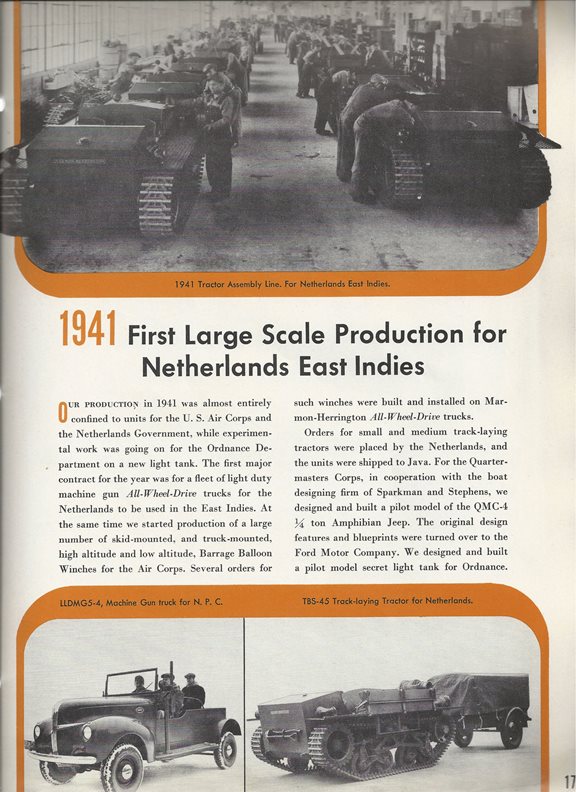
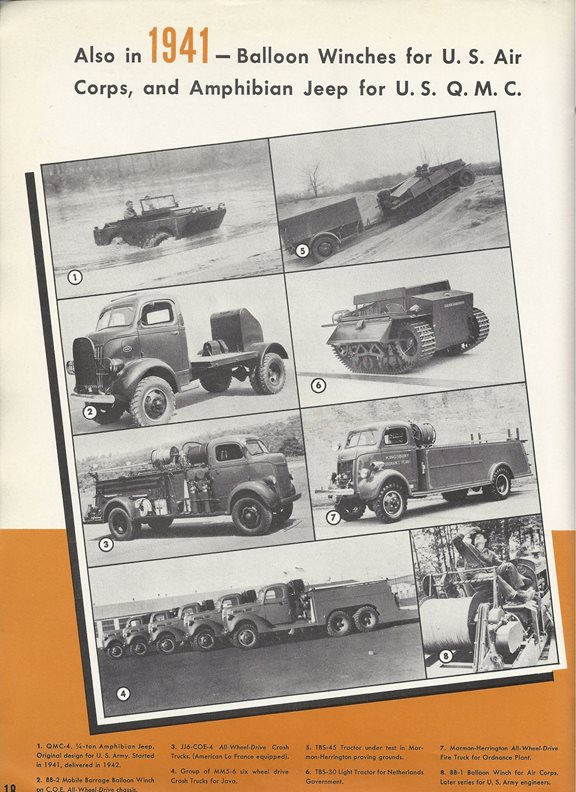
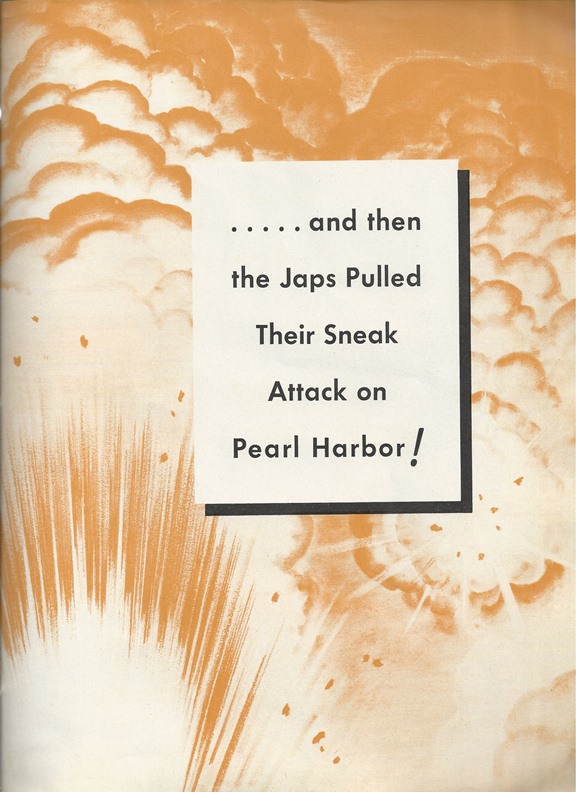
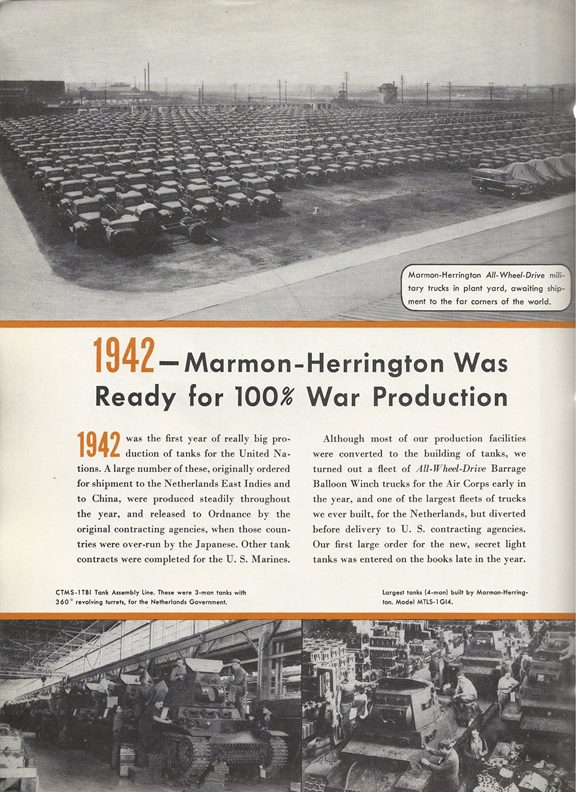
Building the CTMS-1TB1 tank in 1942 for the
Netherlands did not make any sense. The Dutch East Indies was
under the control of the Japanese, and the Netherlands was
occupied by the Germans. The tanks were taken by the United States
military but were of little practical use. On the other hand,
while the rest of the United States was just starting to become really
engaged in war production, Marmon-Herrington was already in the war.
During the years leading up to World War Two, its military sales to
foreign countries gave employment to many men in the Indianapolis area
who might otherwise have been unemployed.
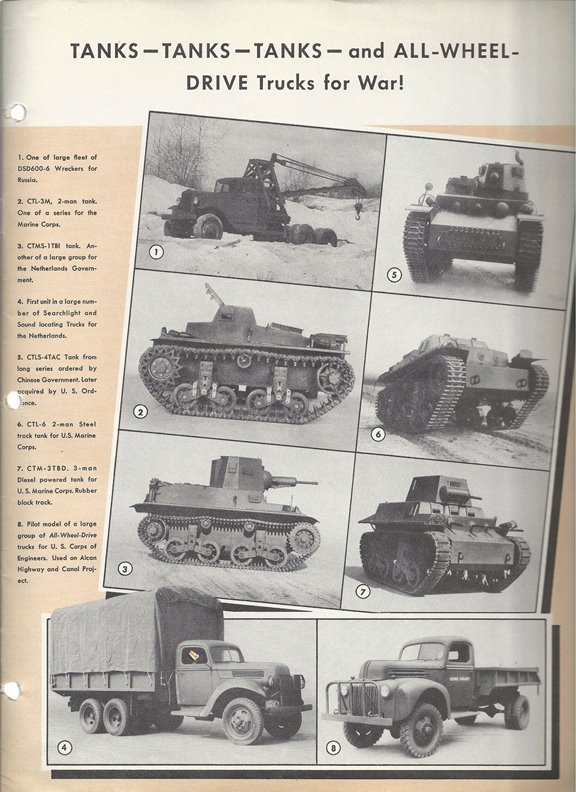
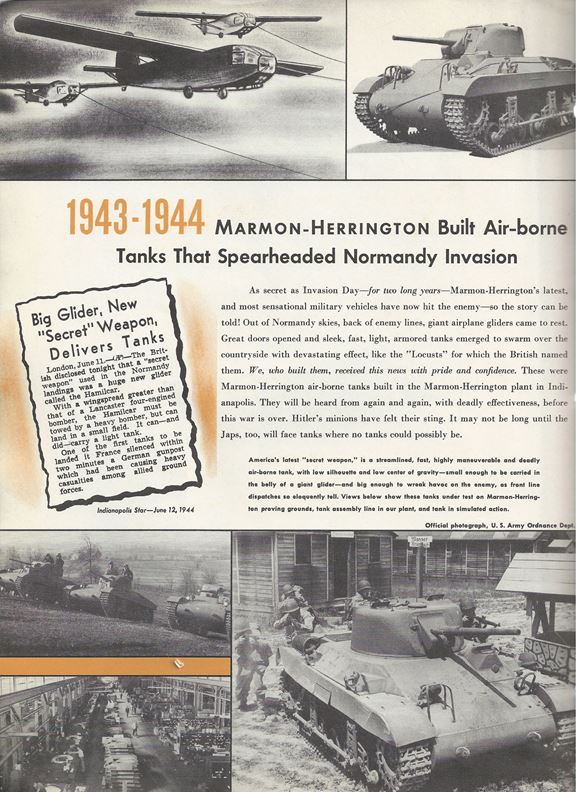
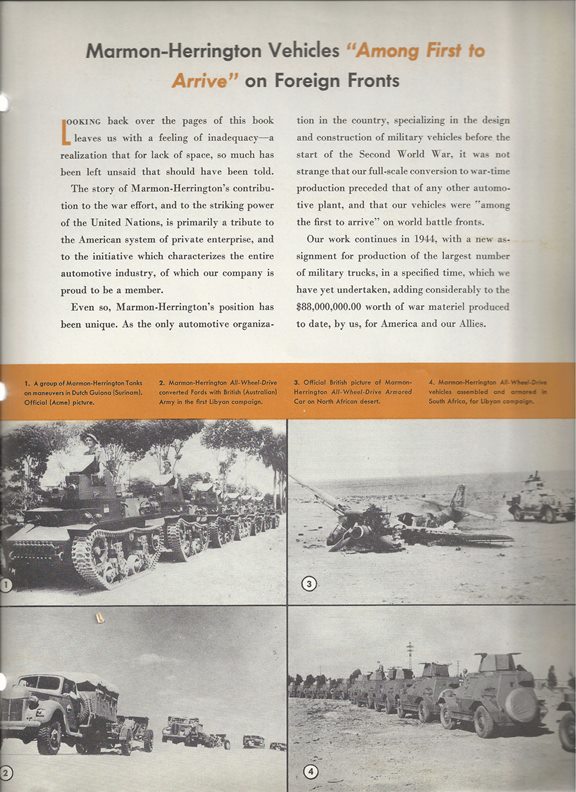
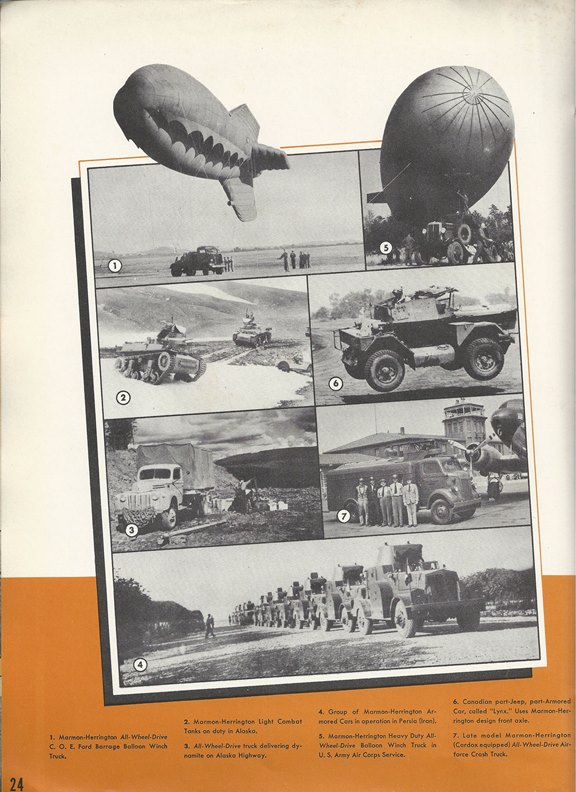
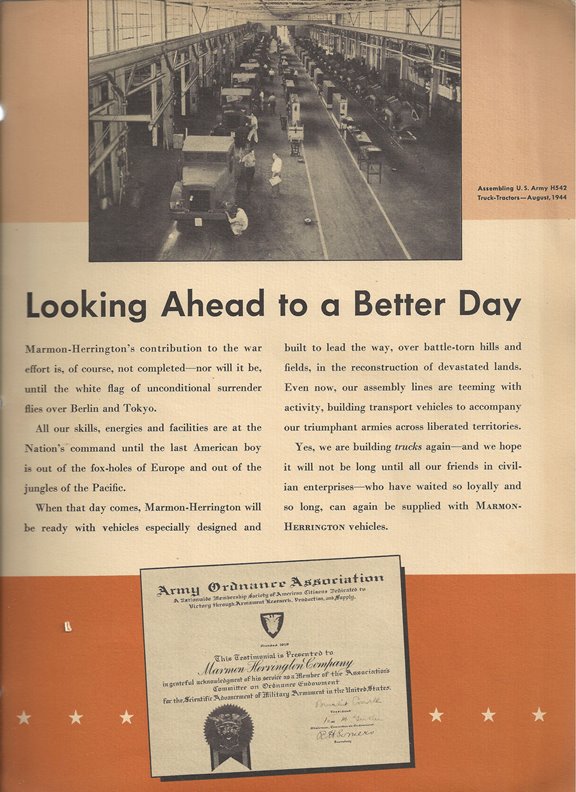
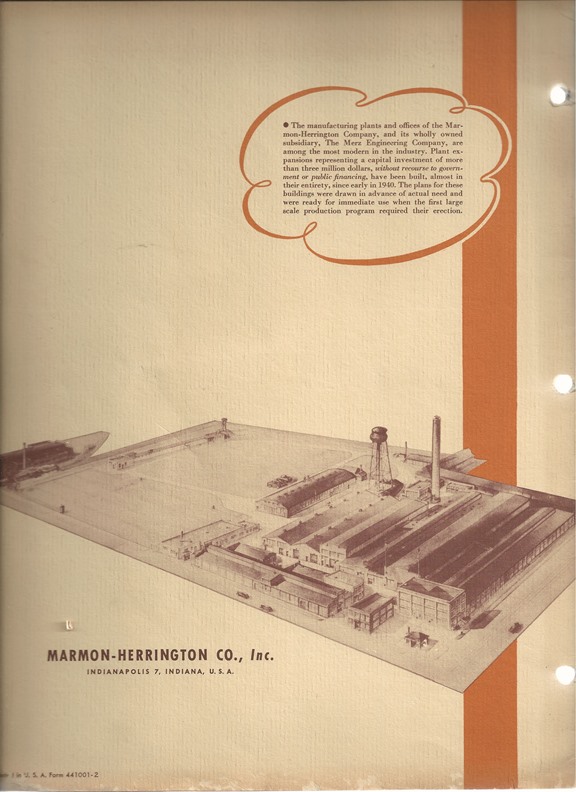
|










































































































